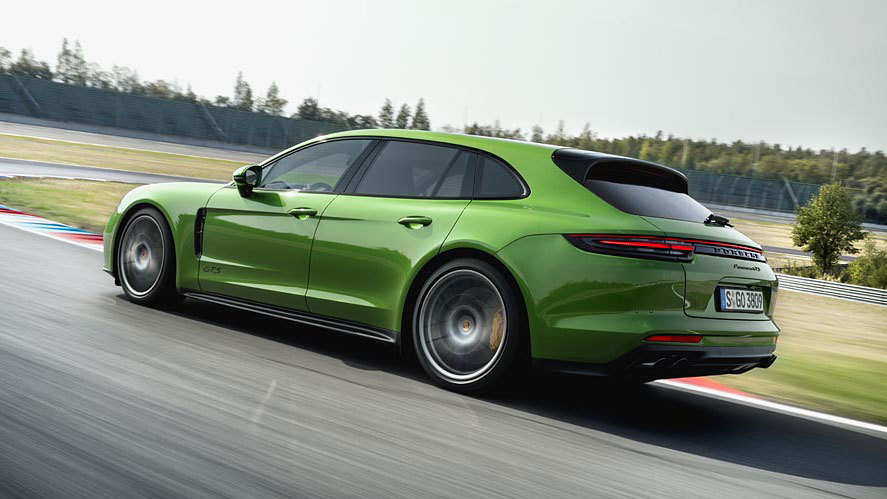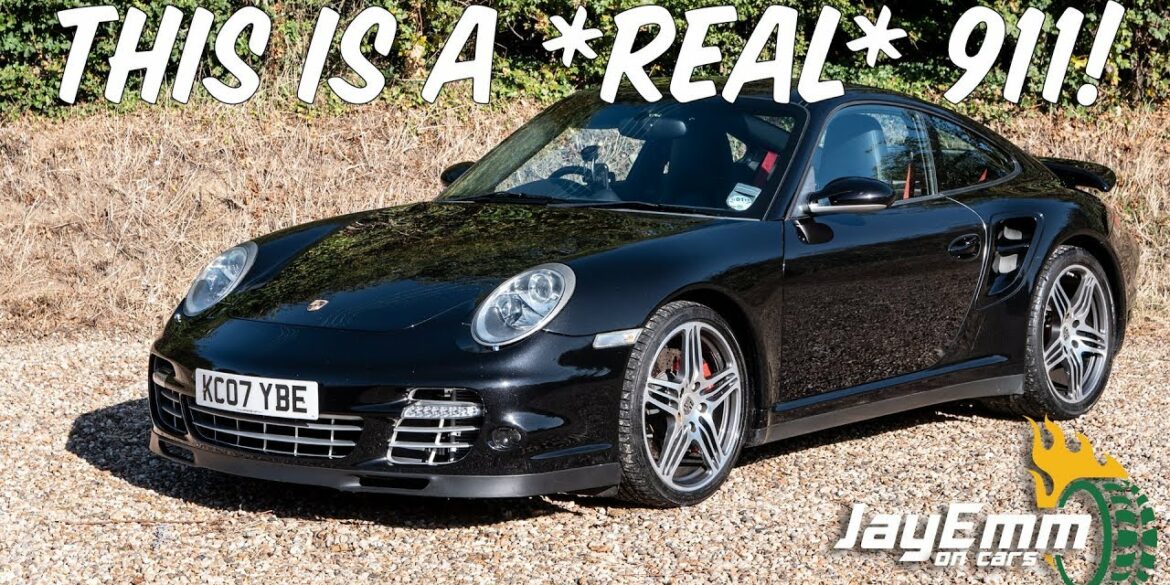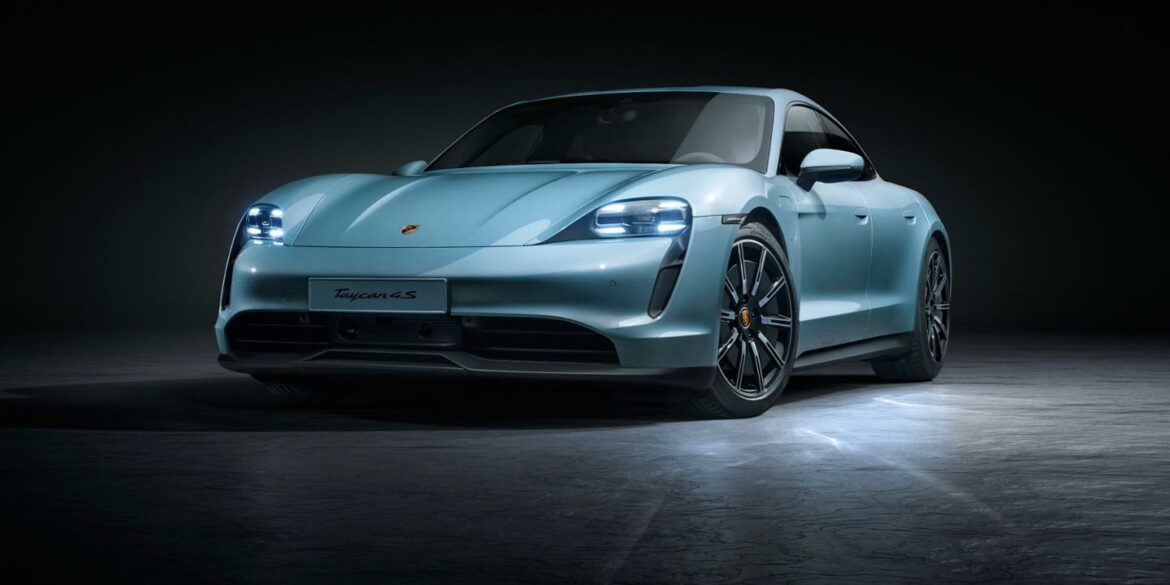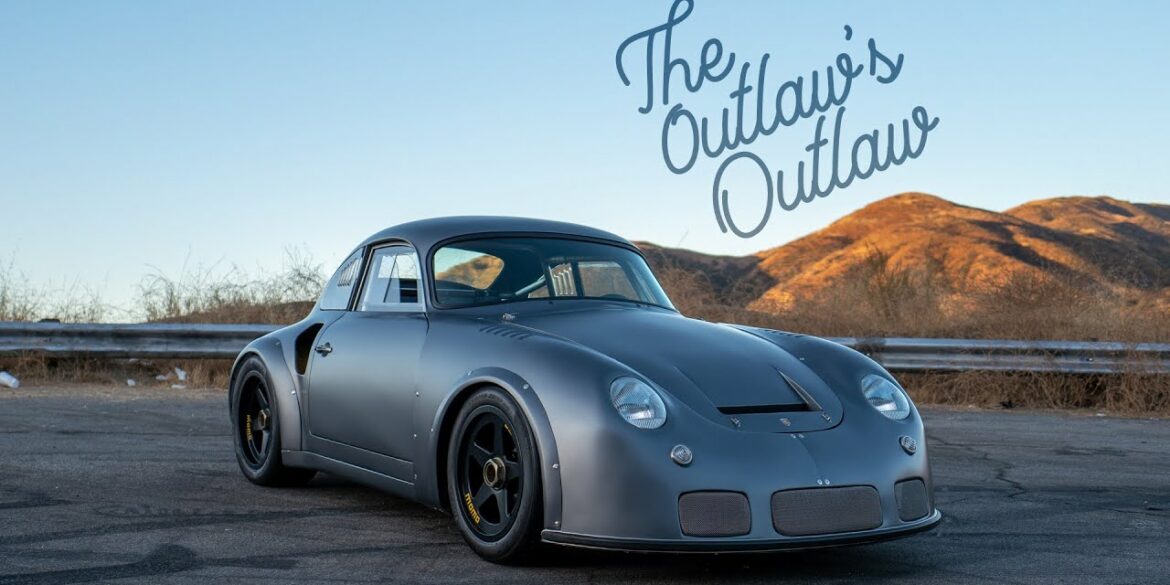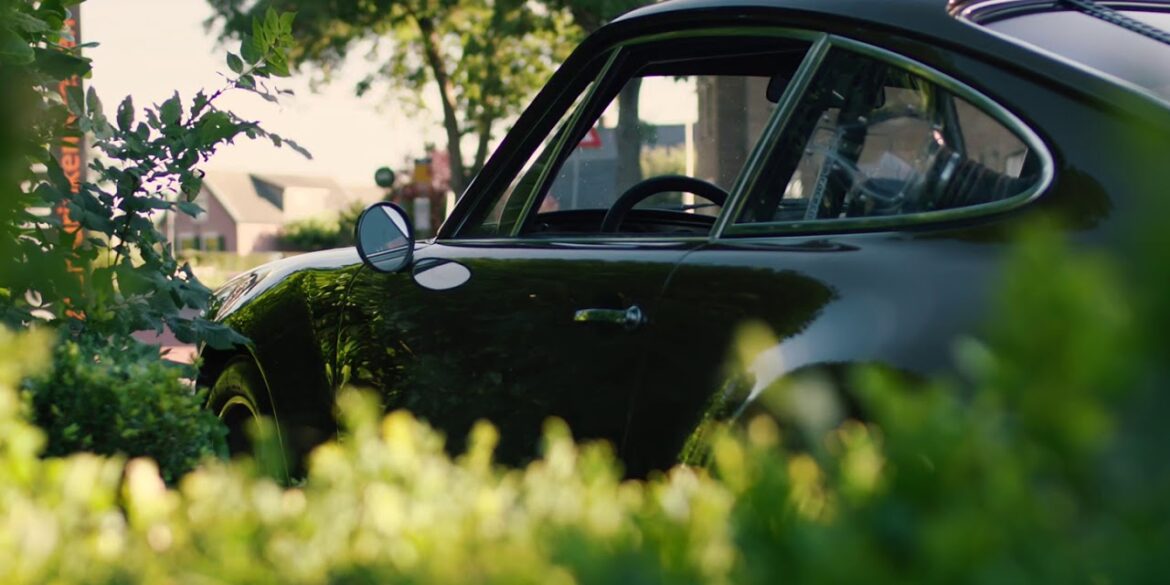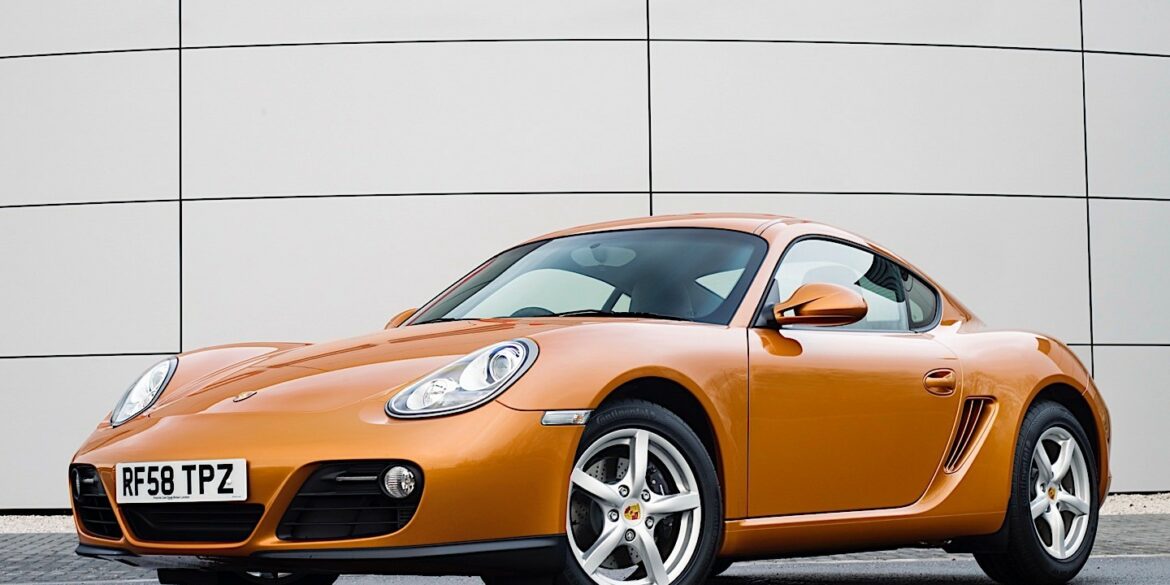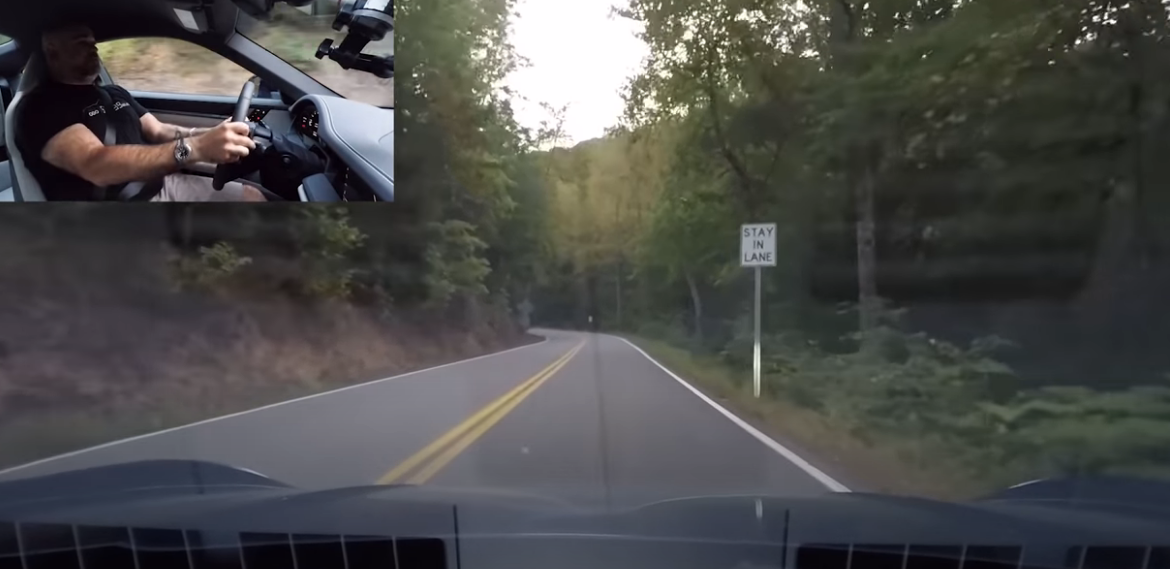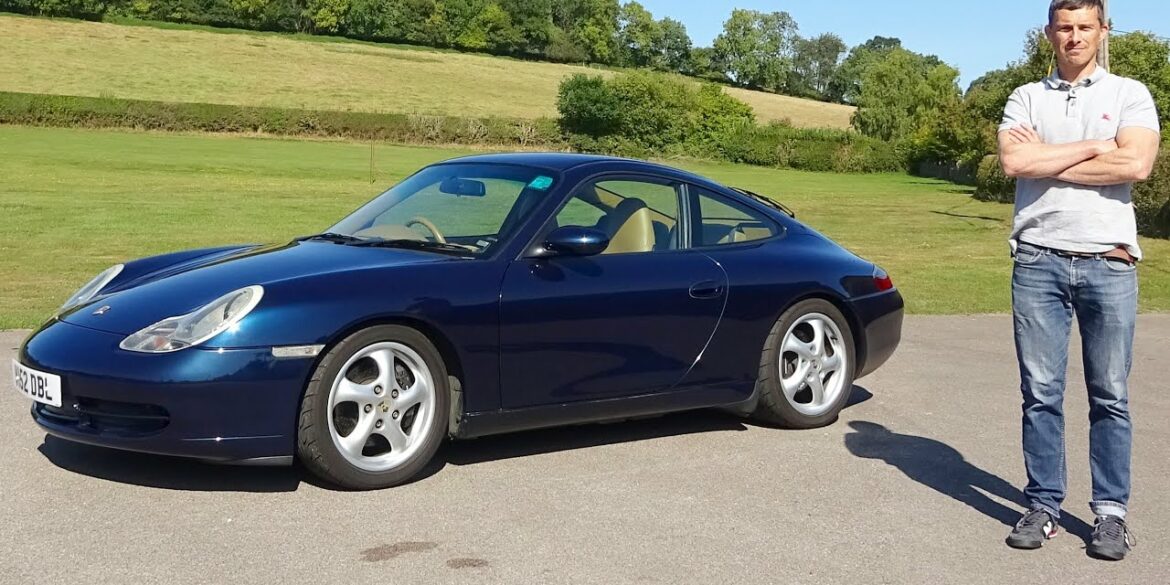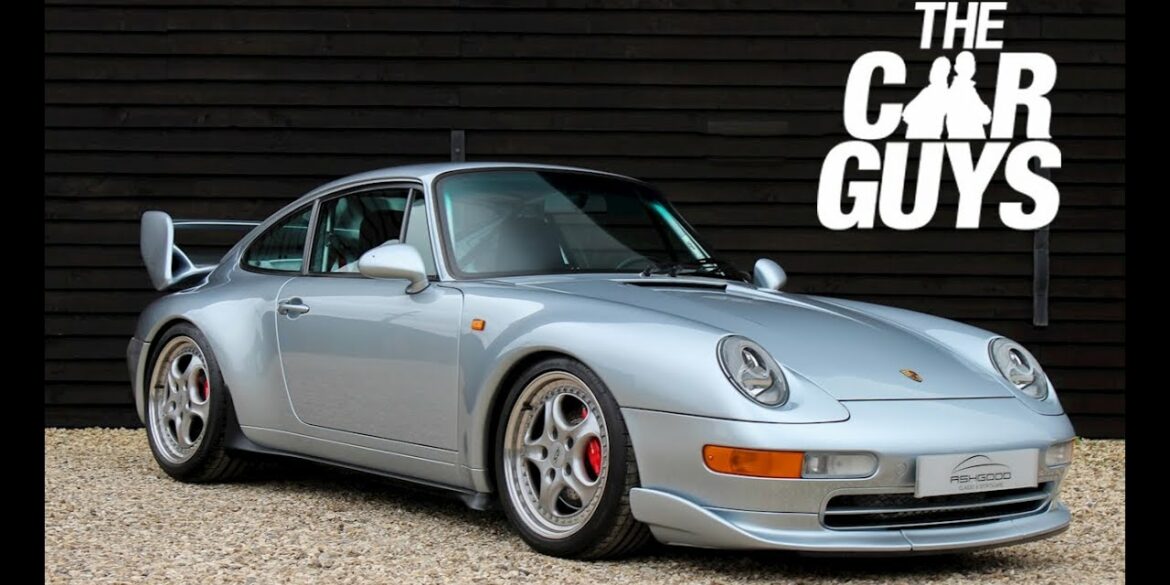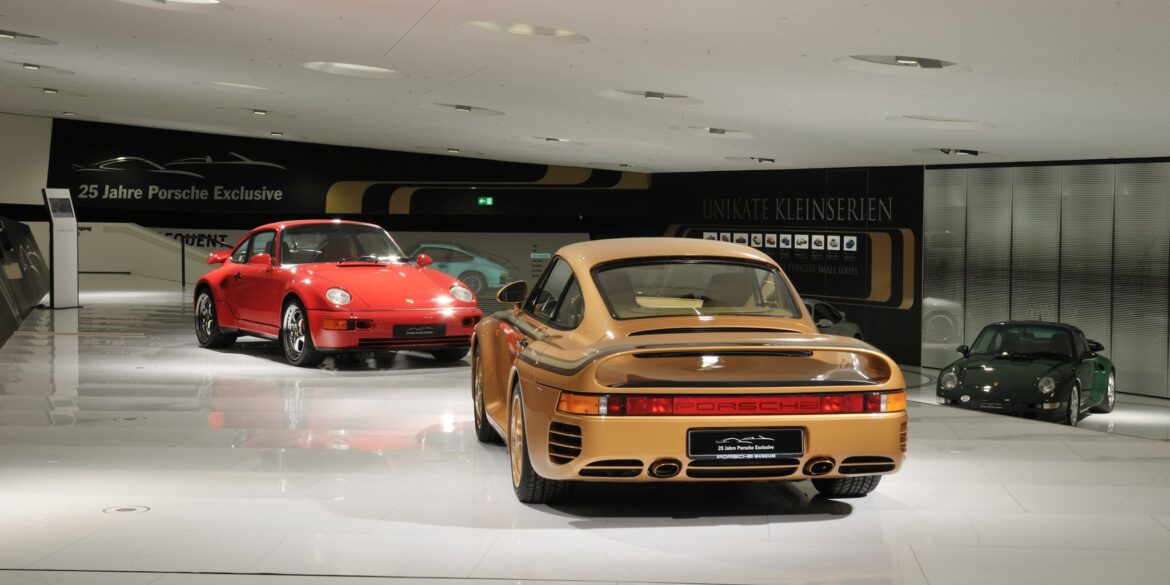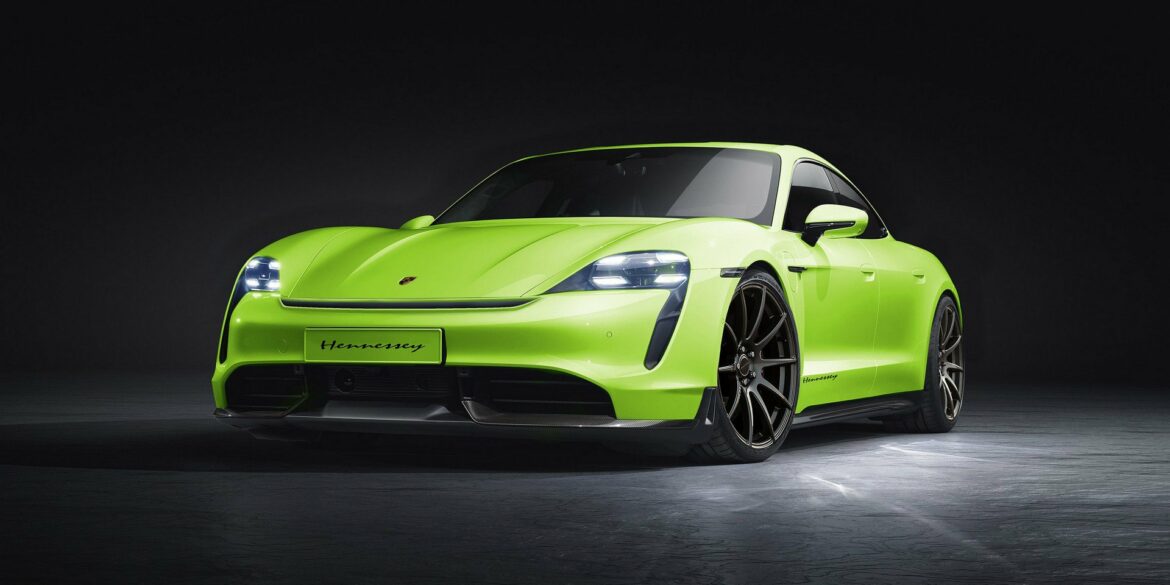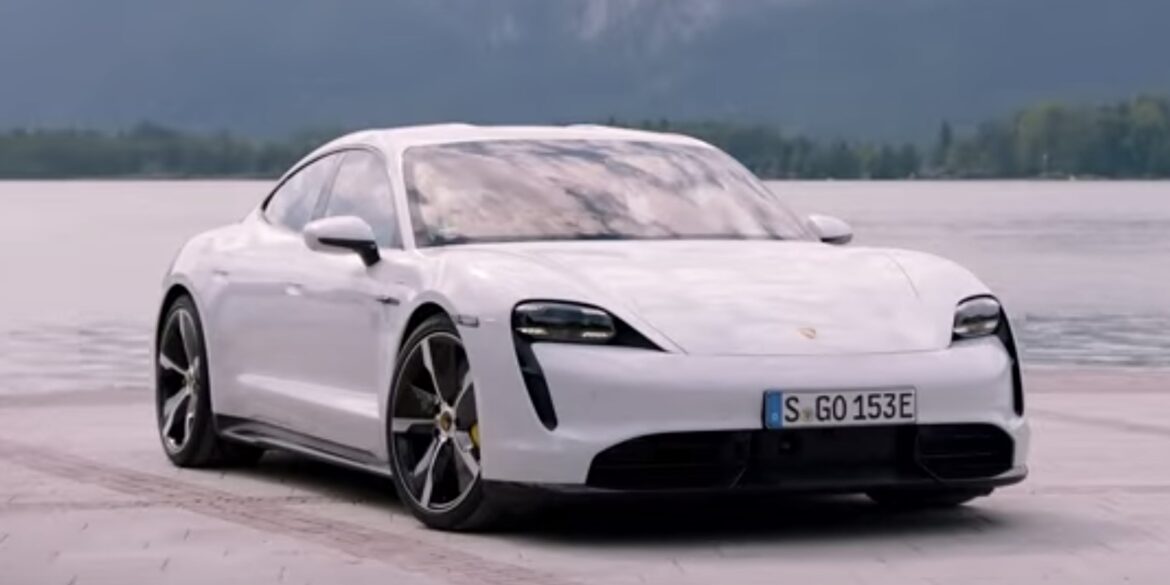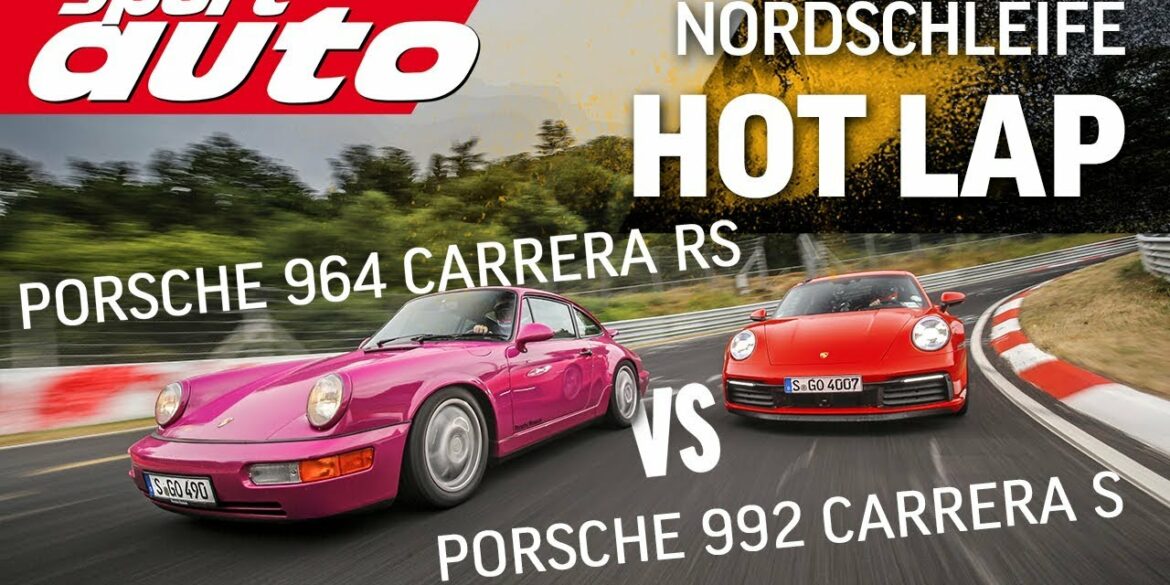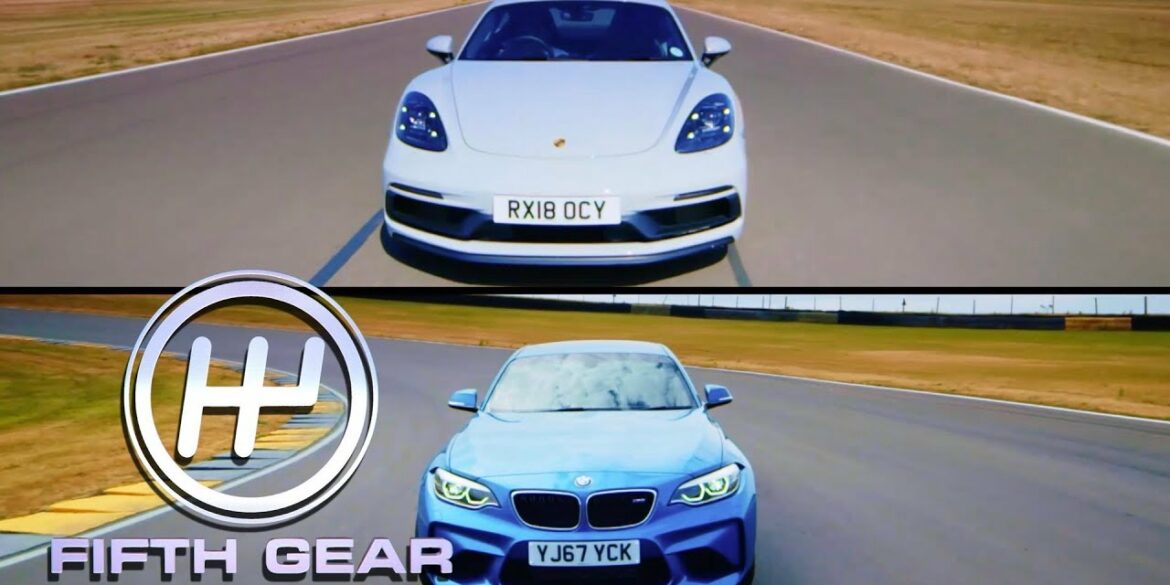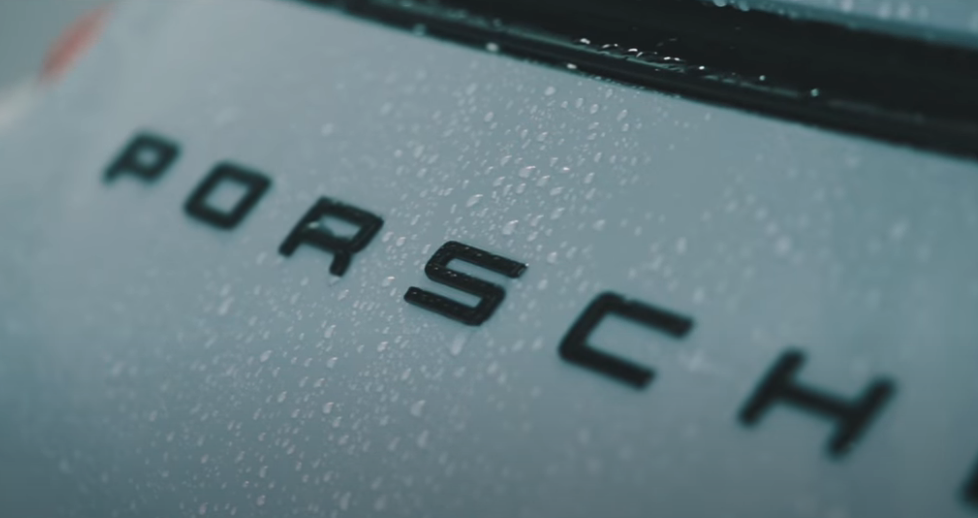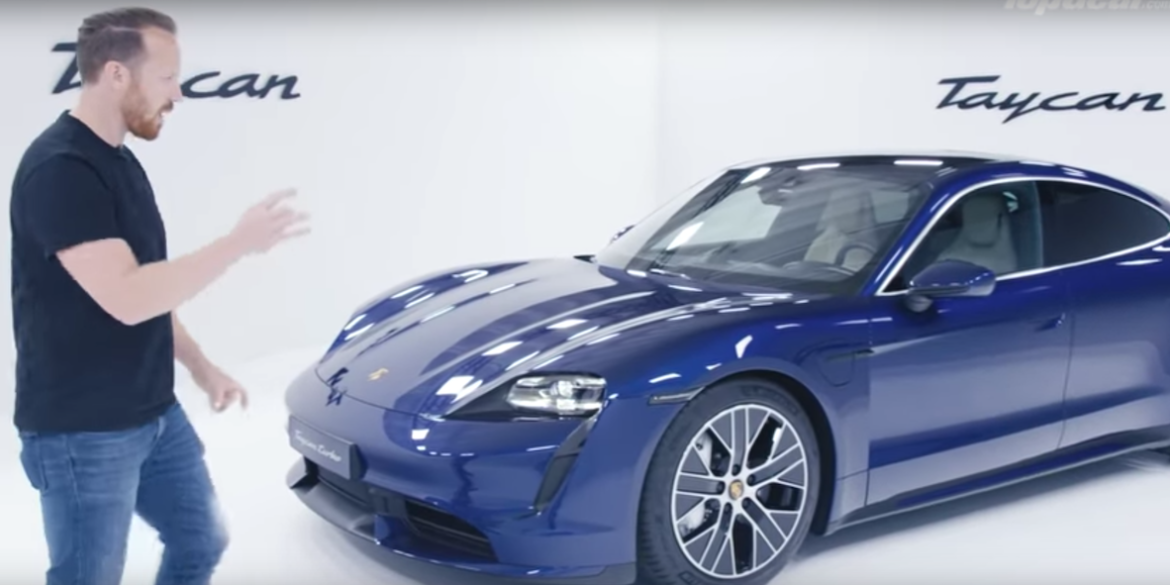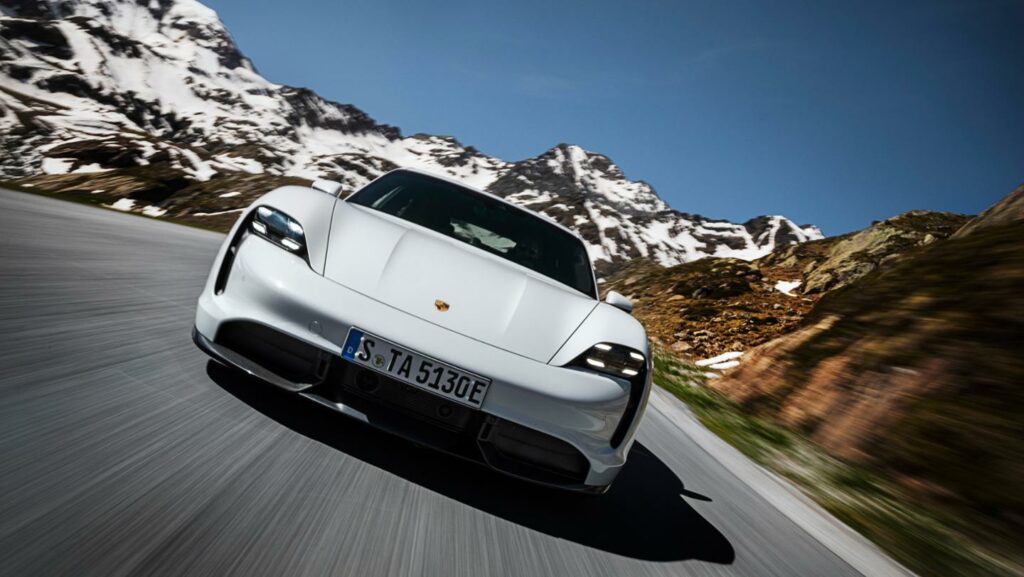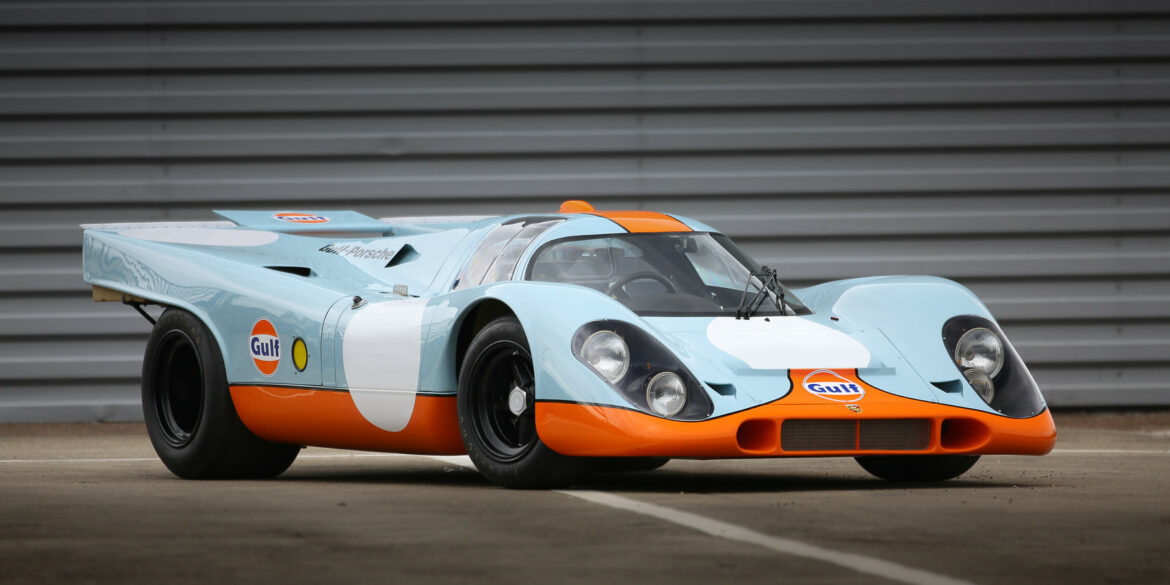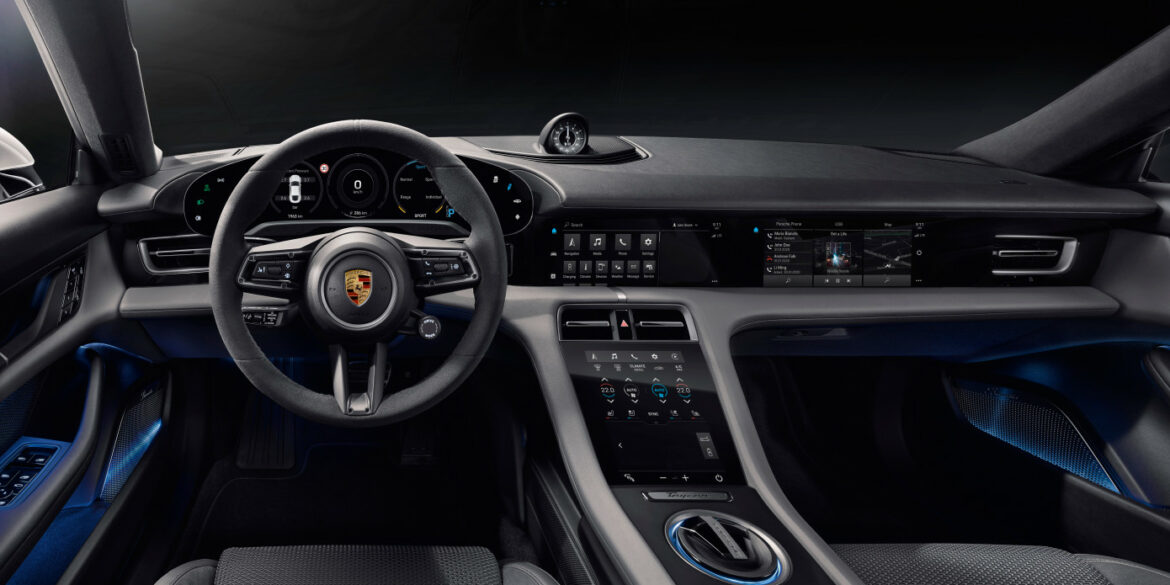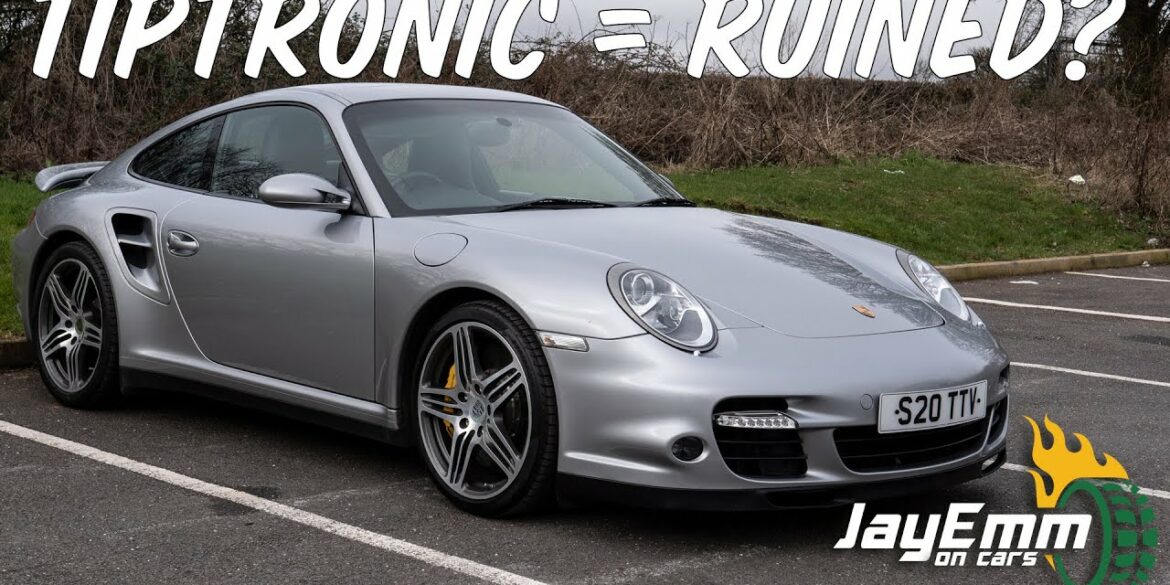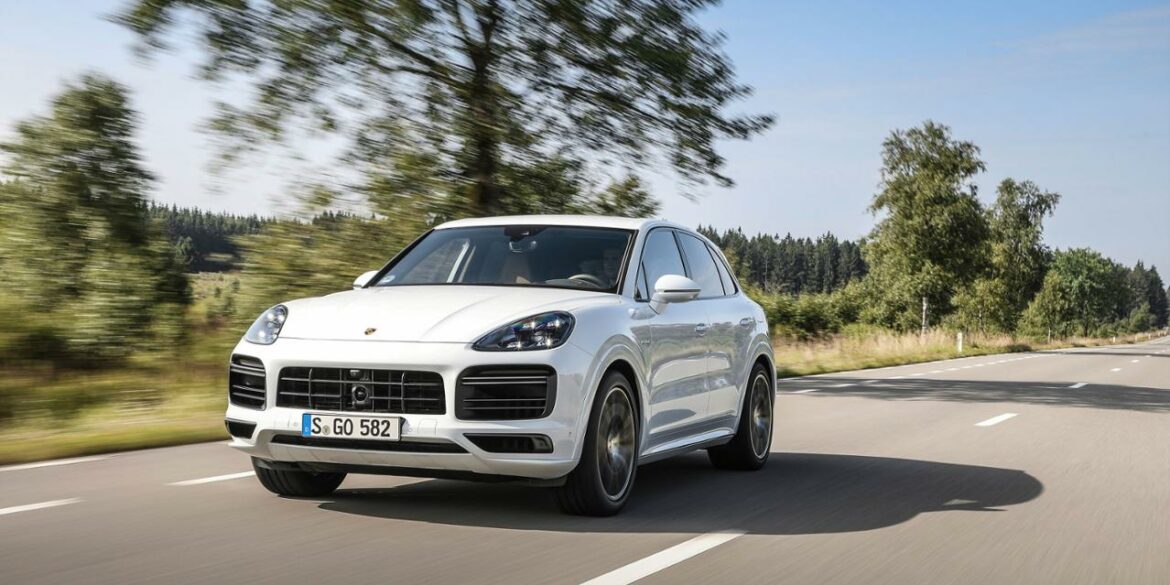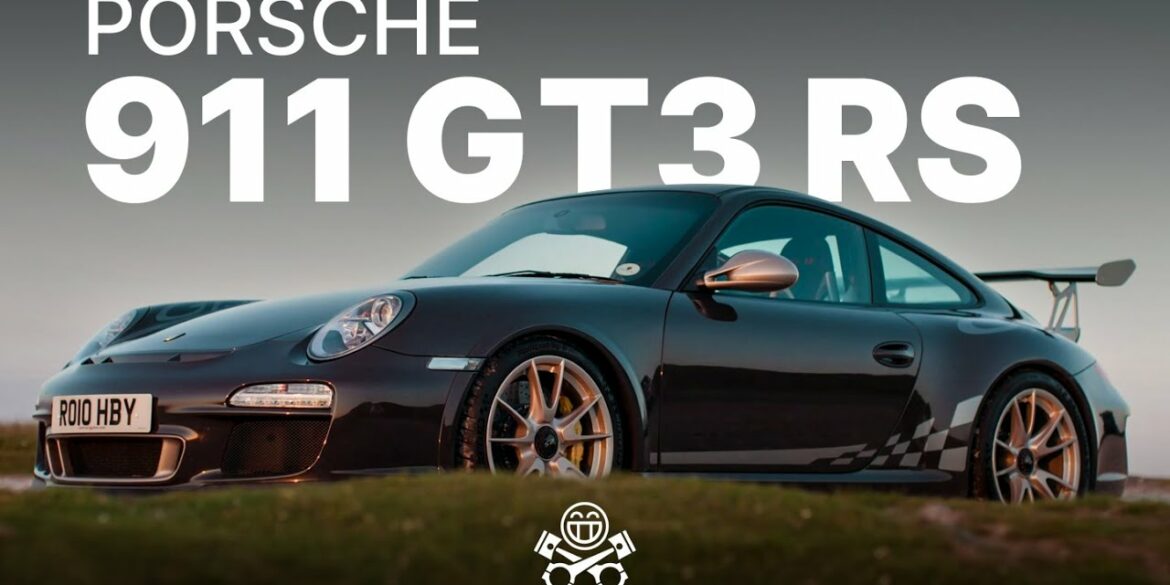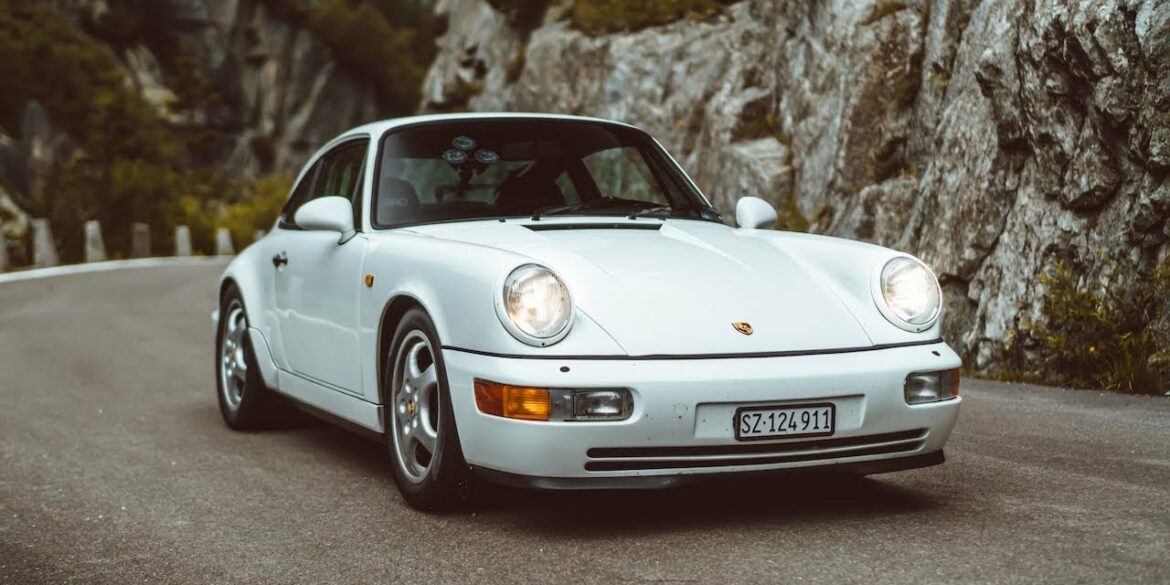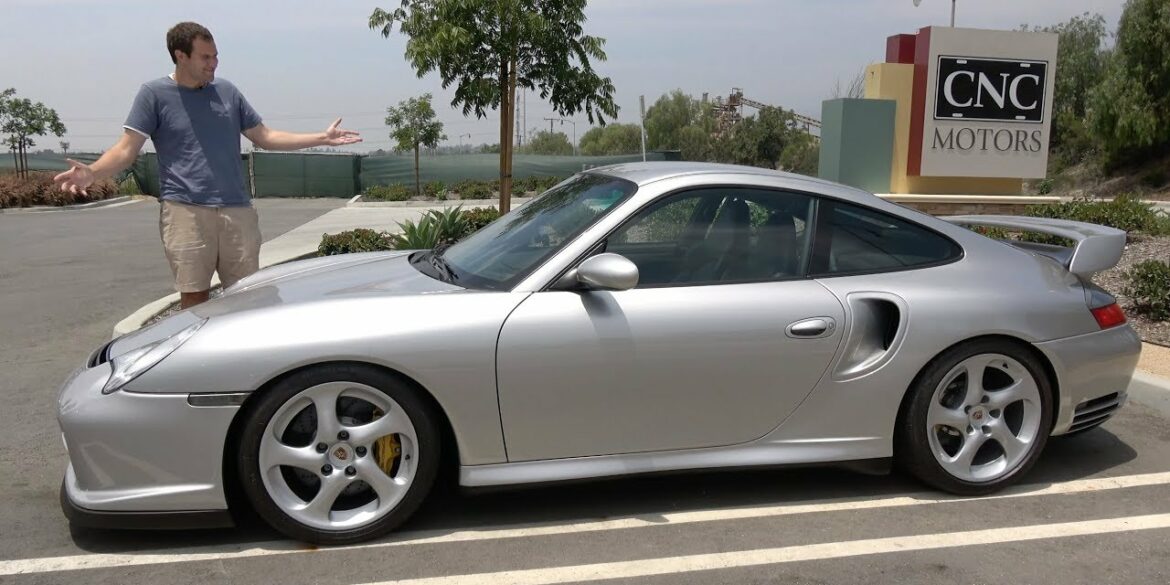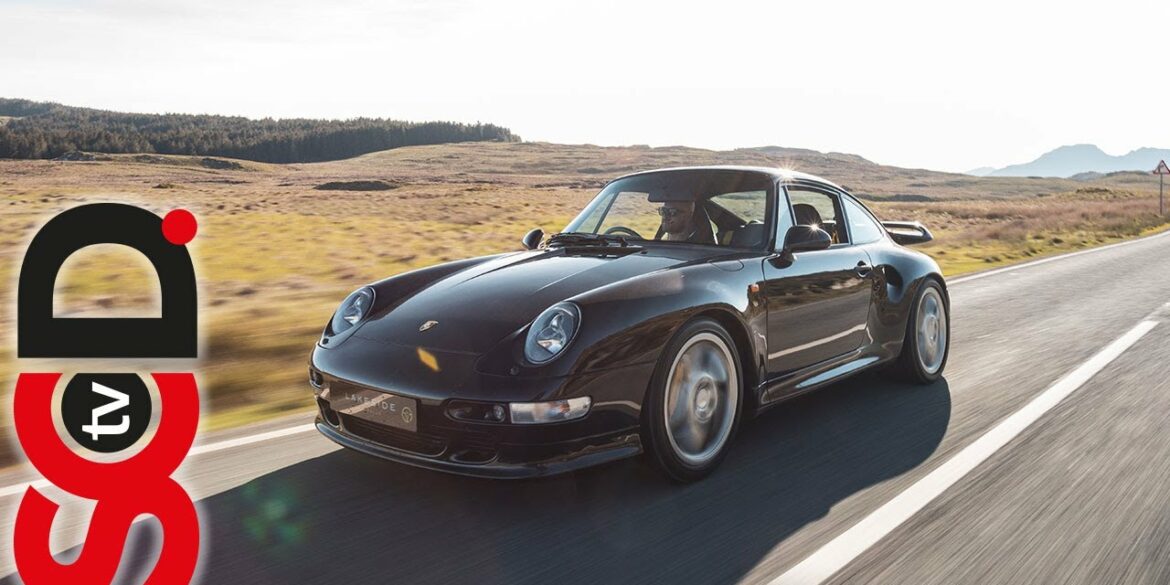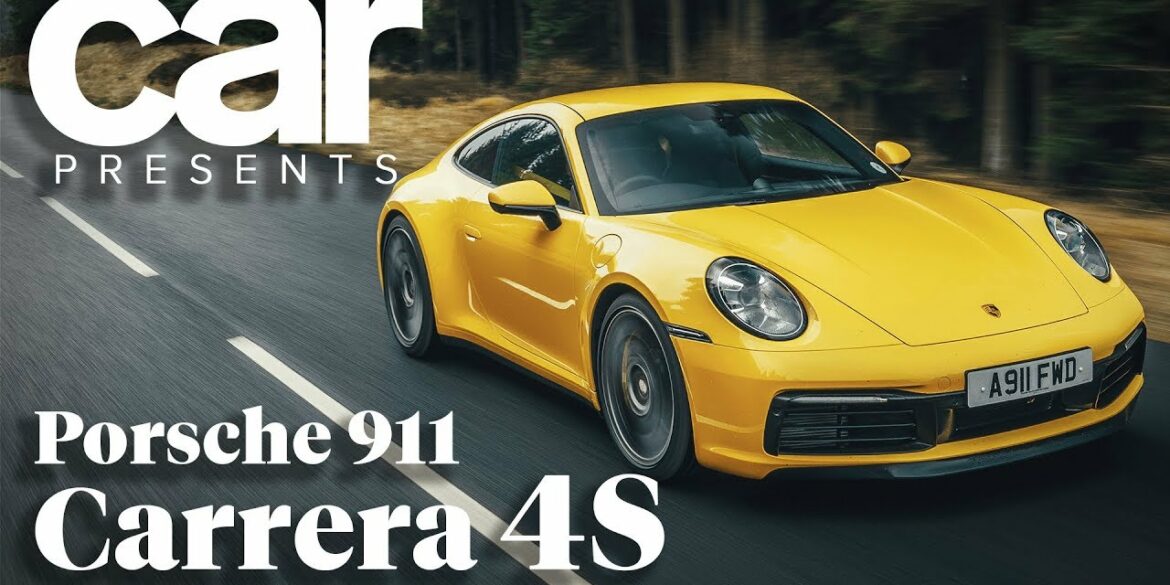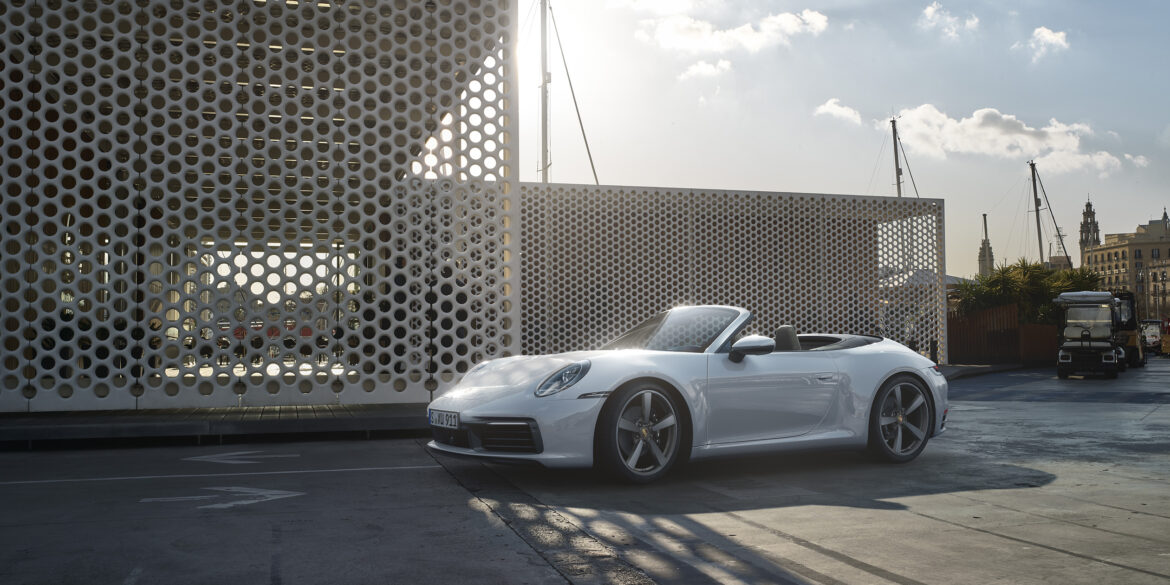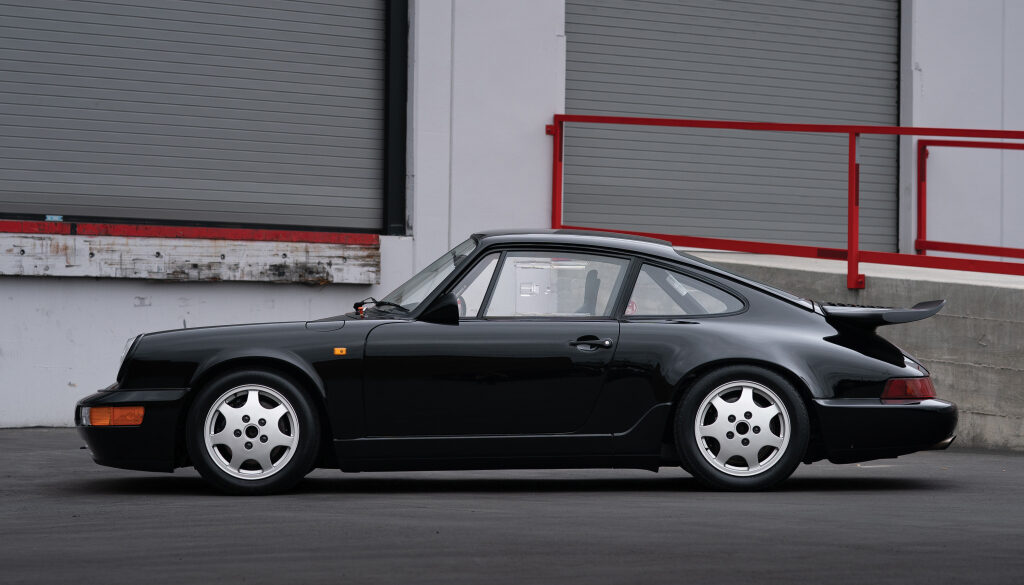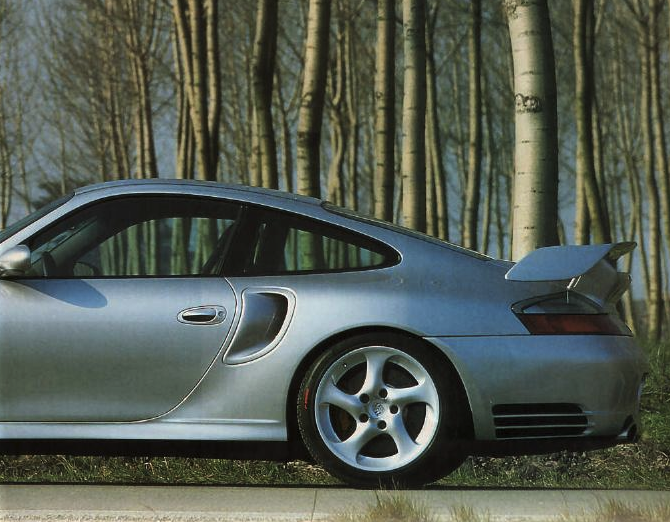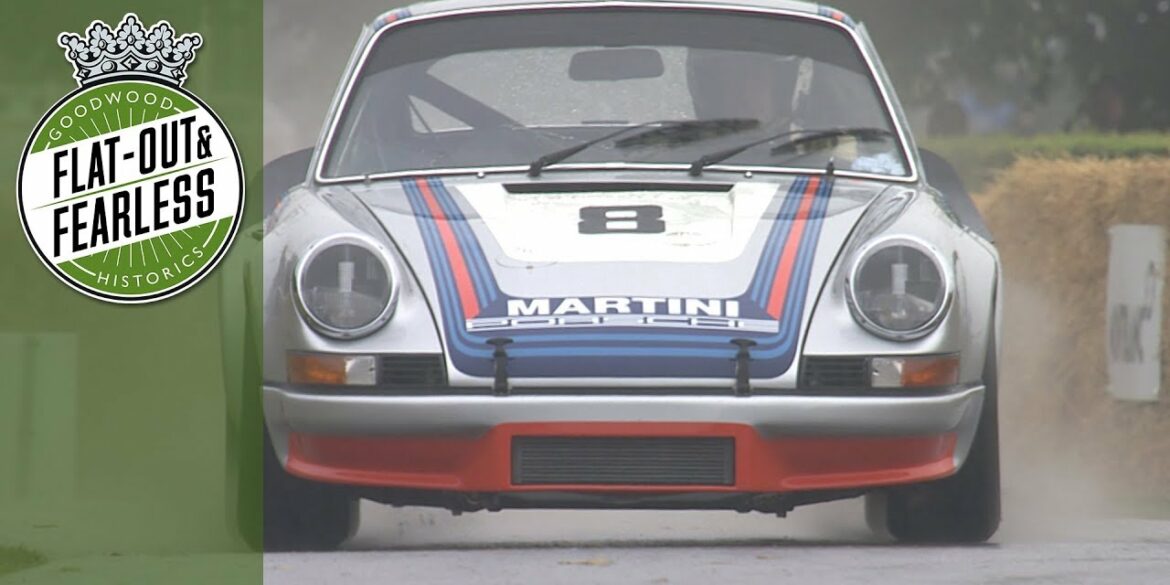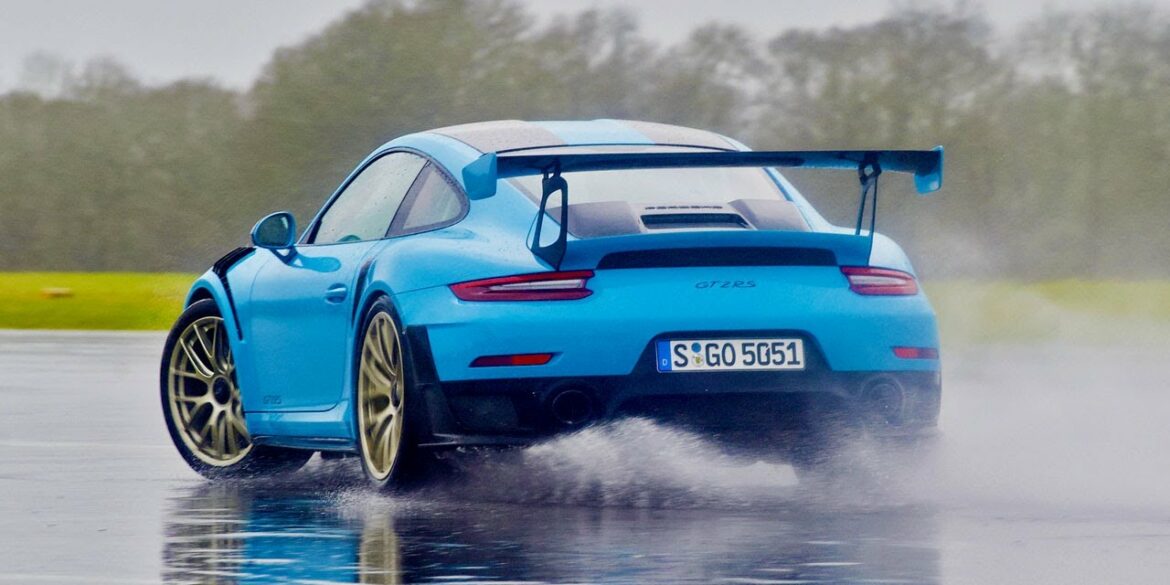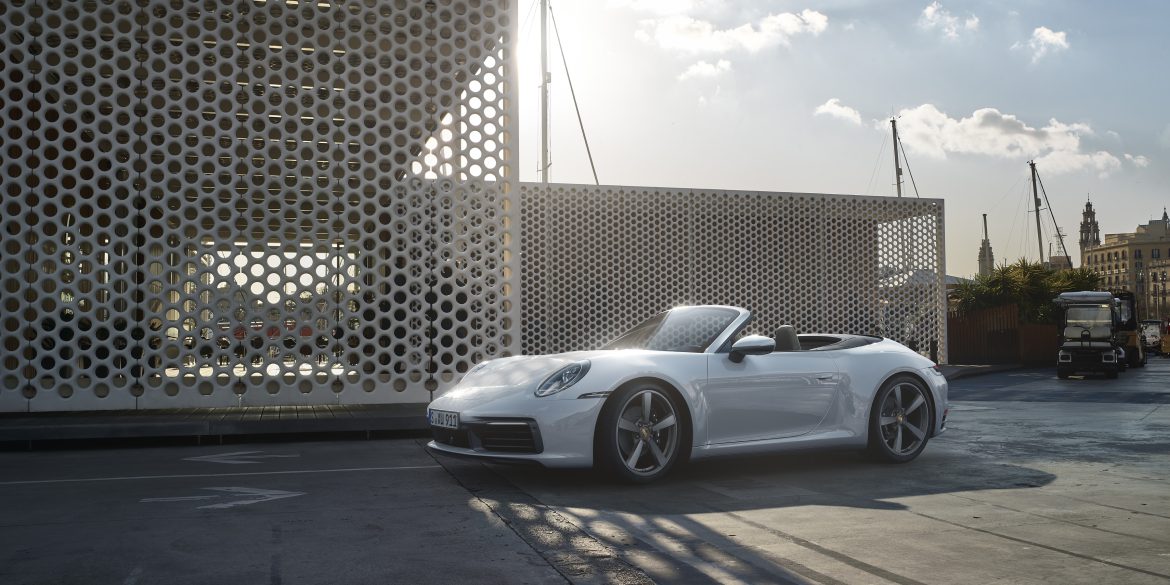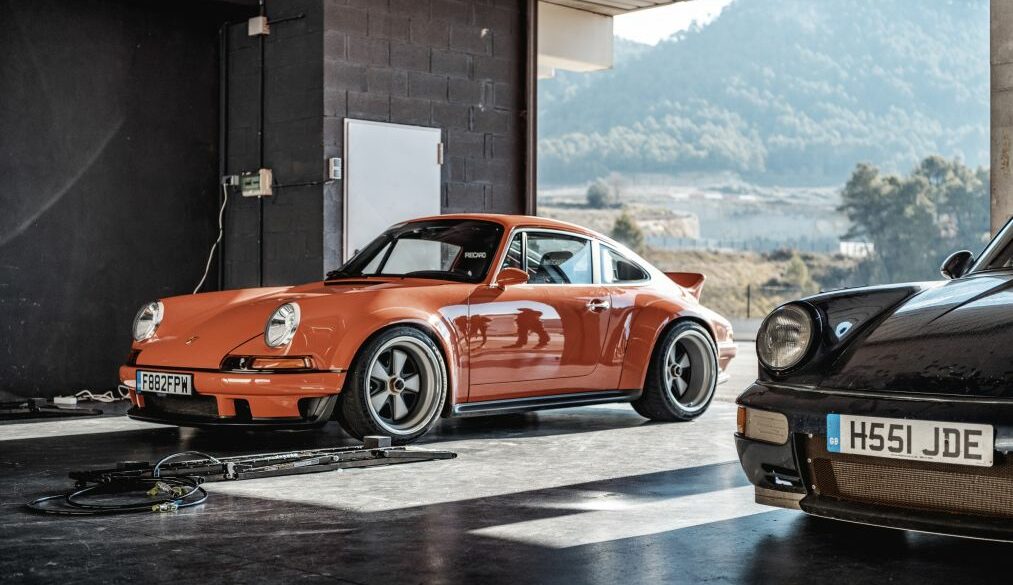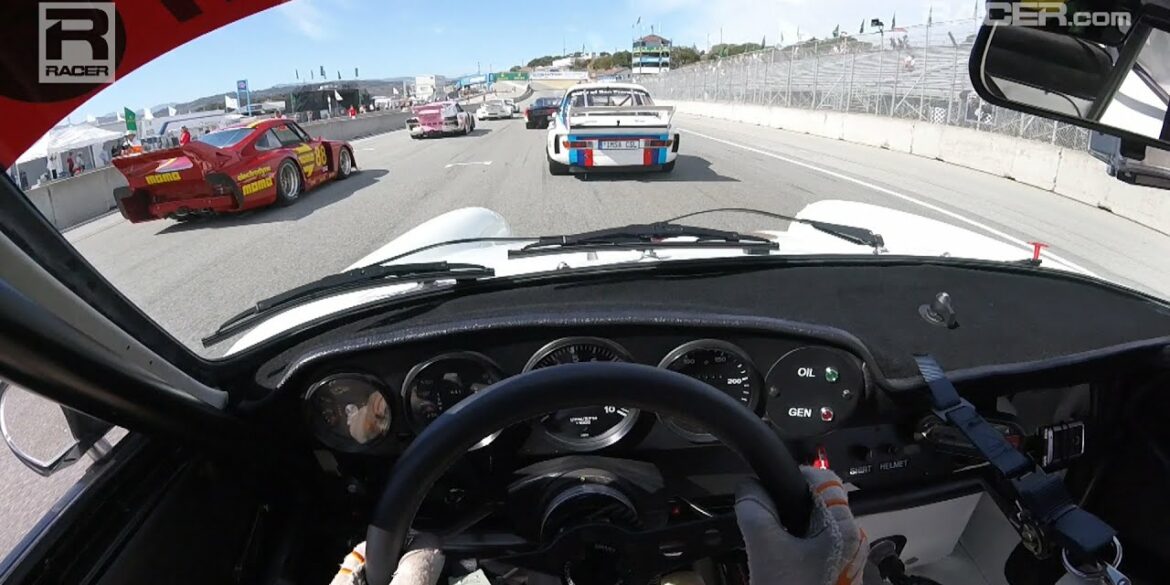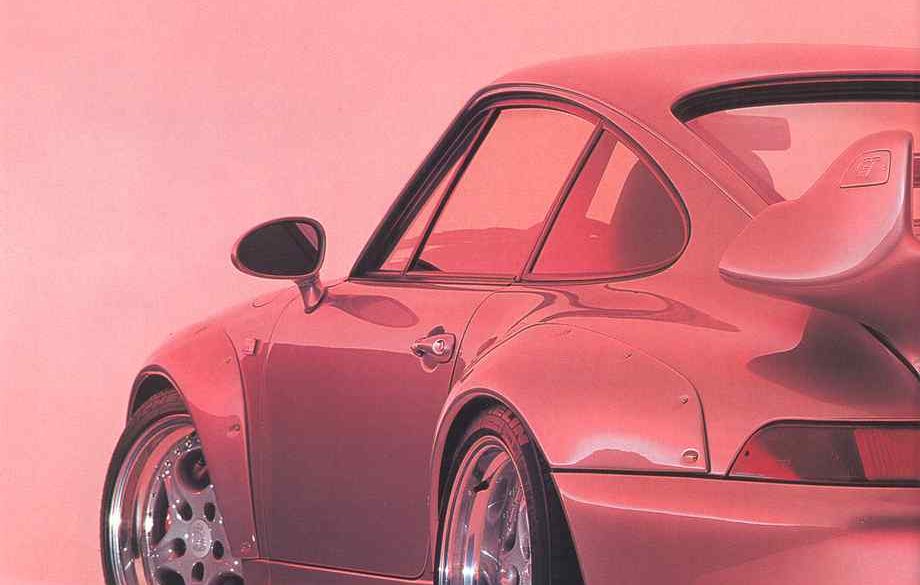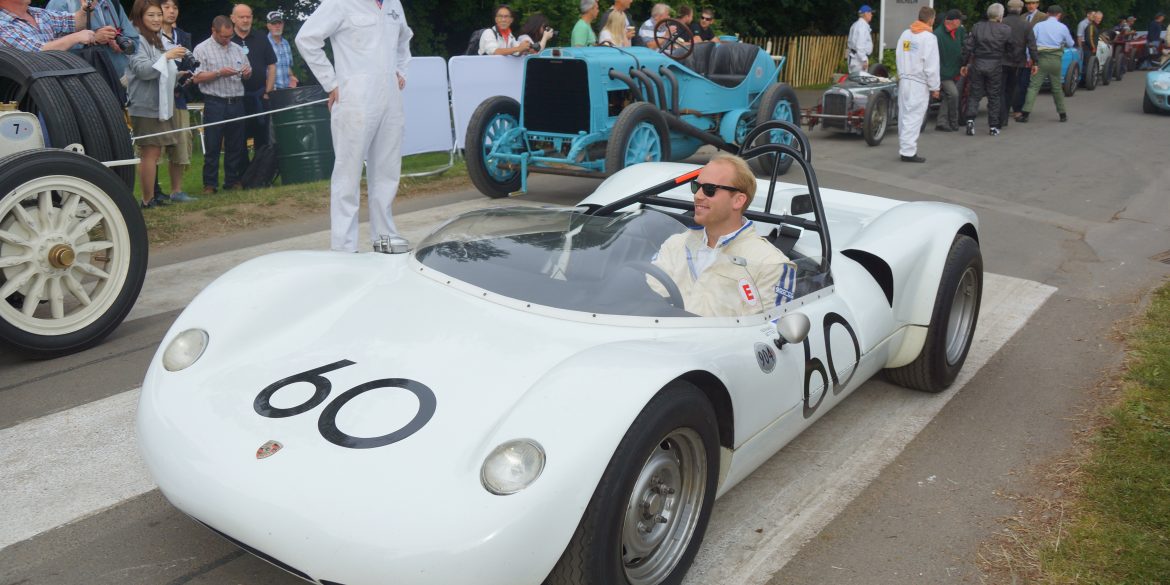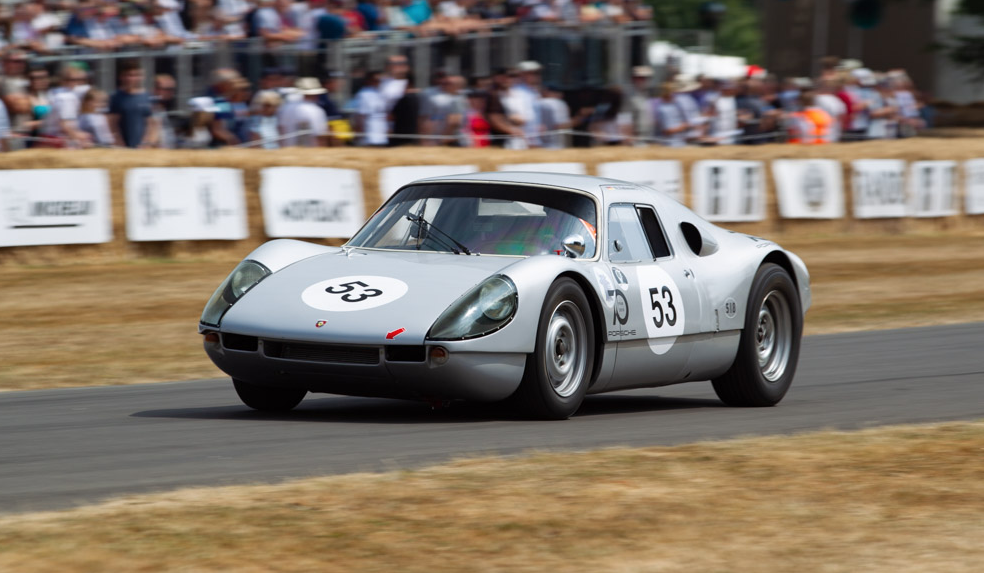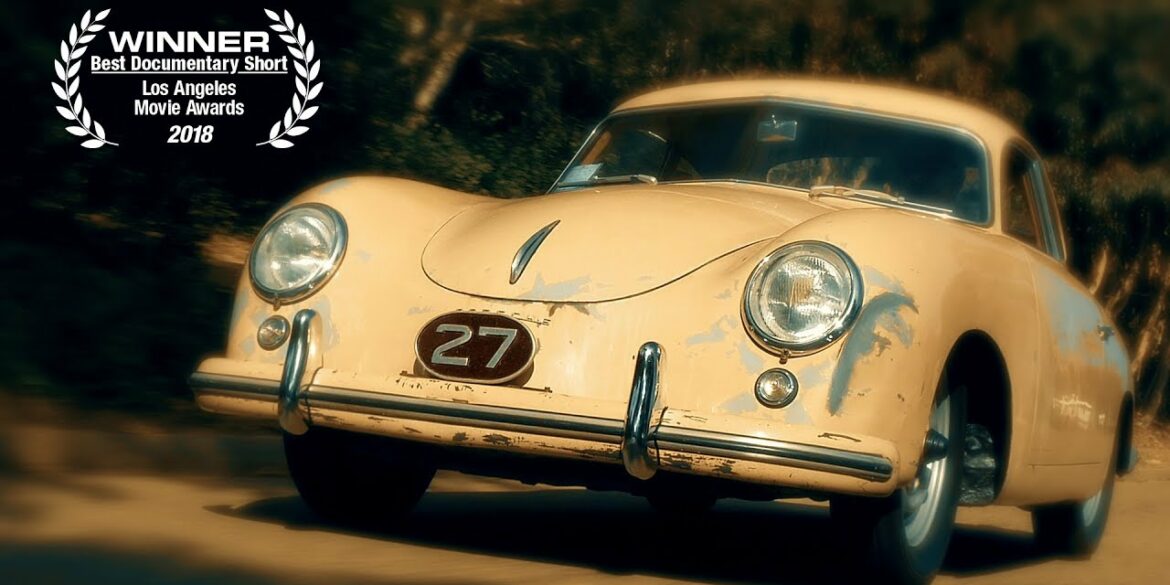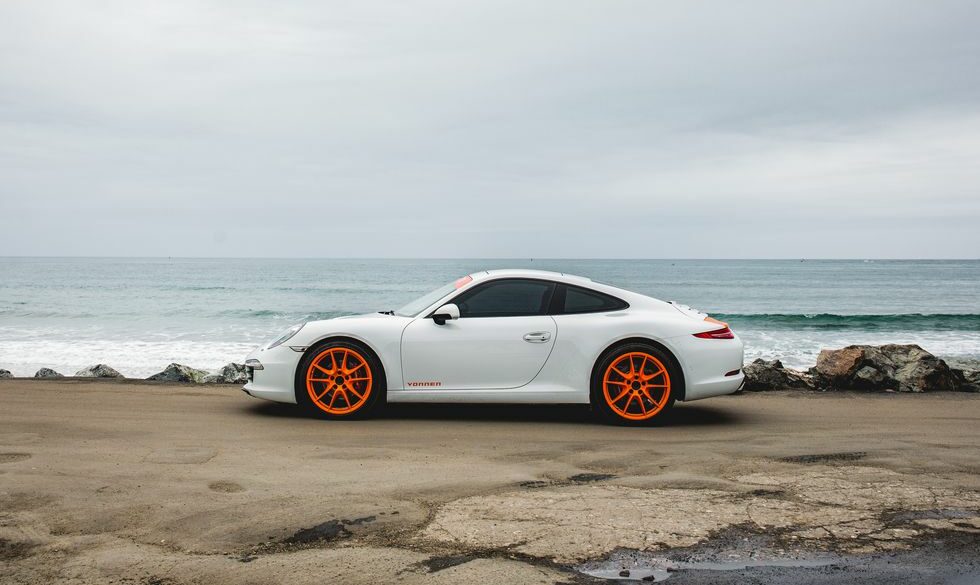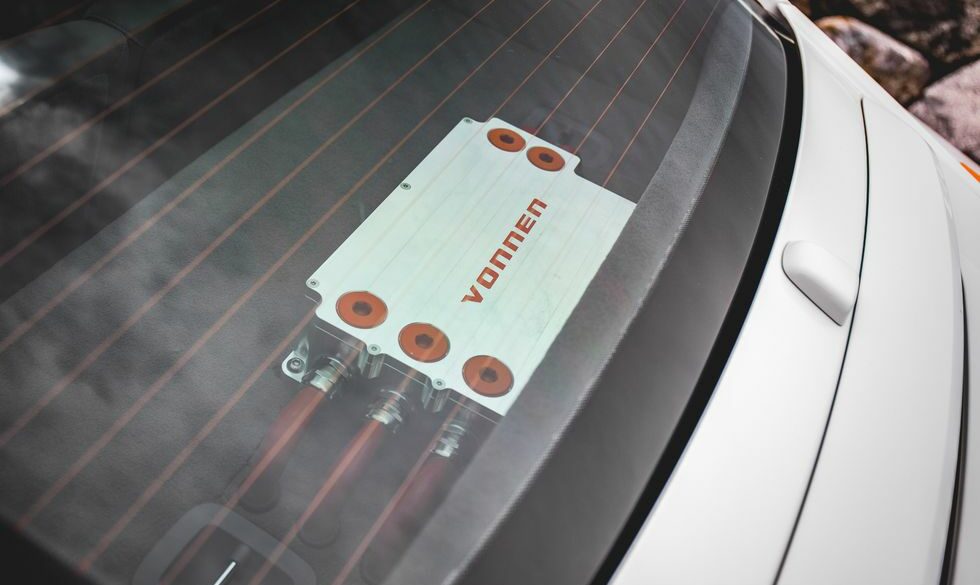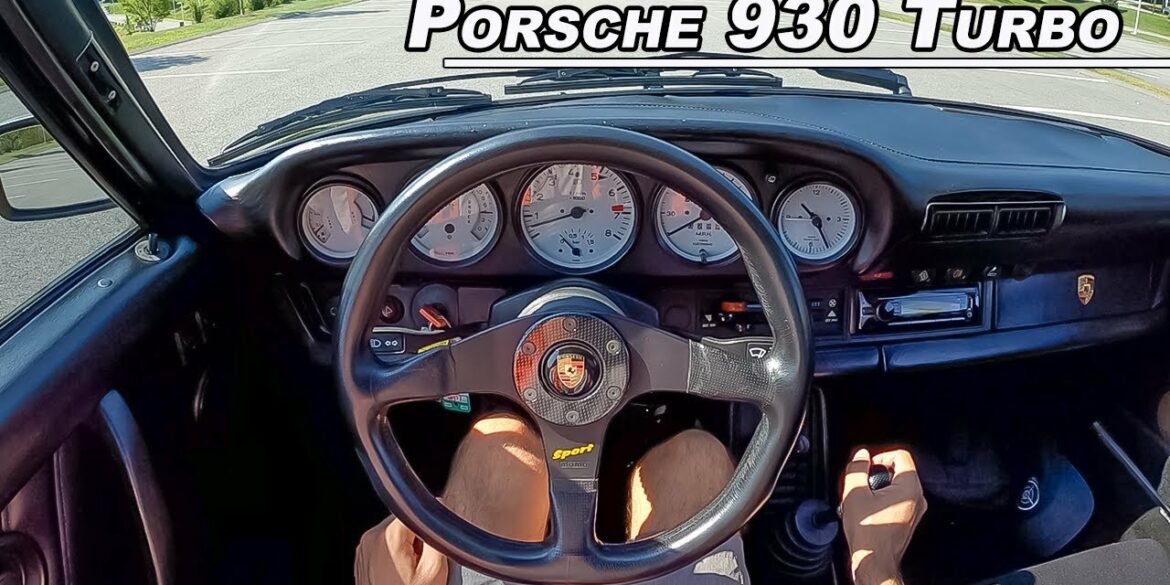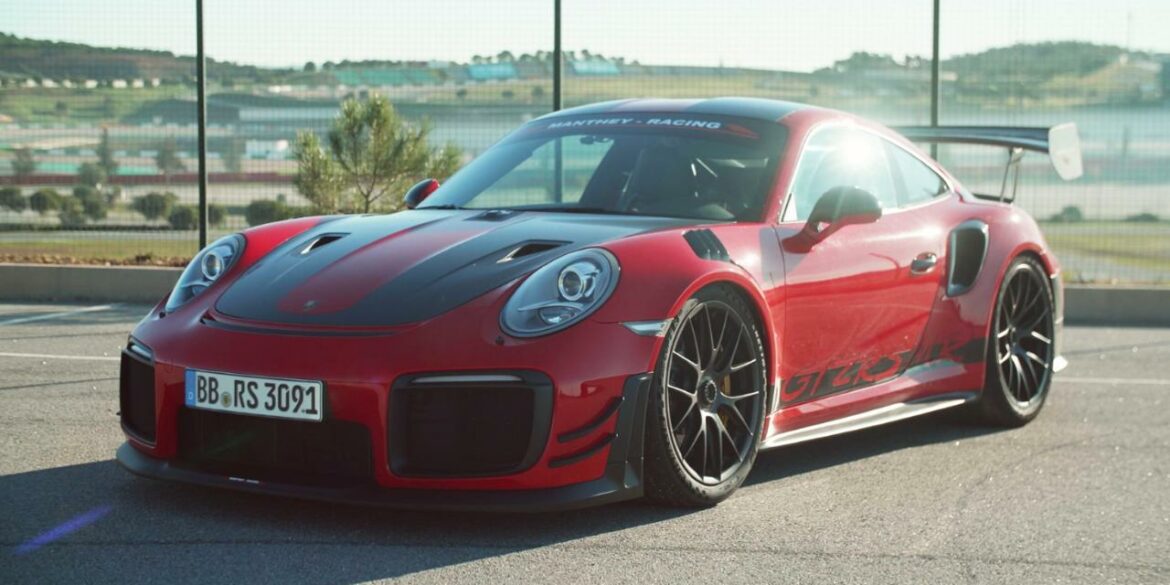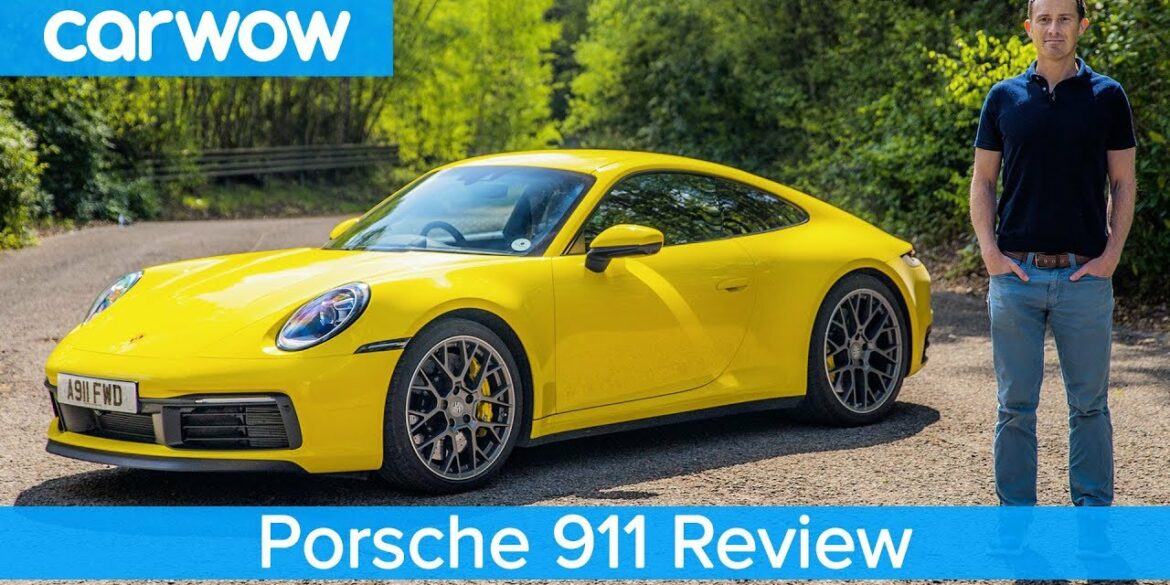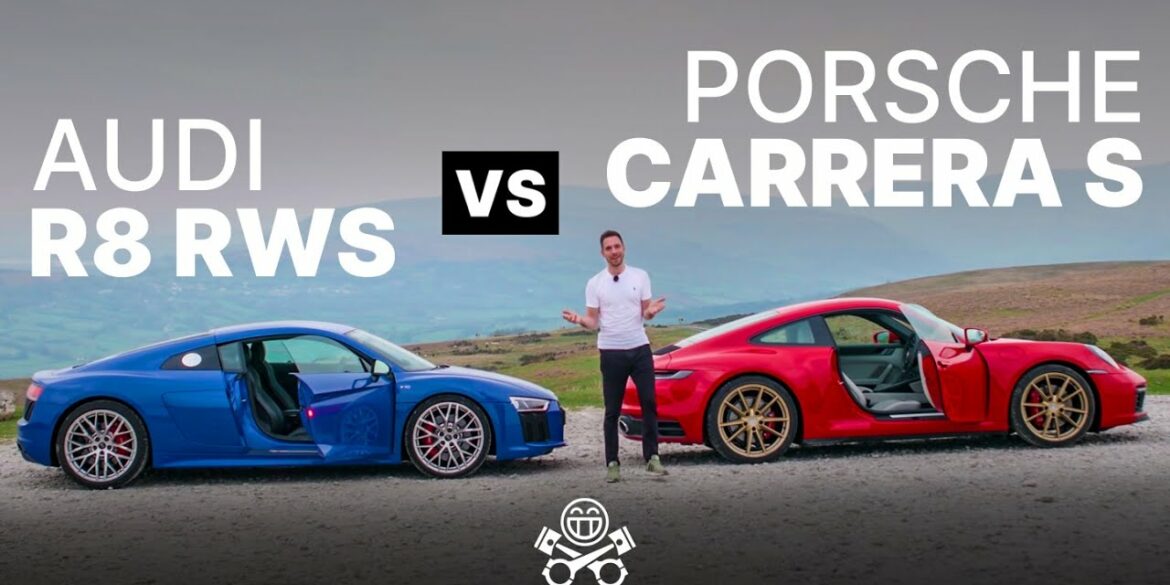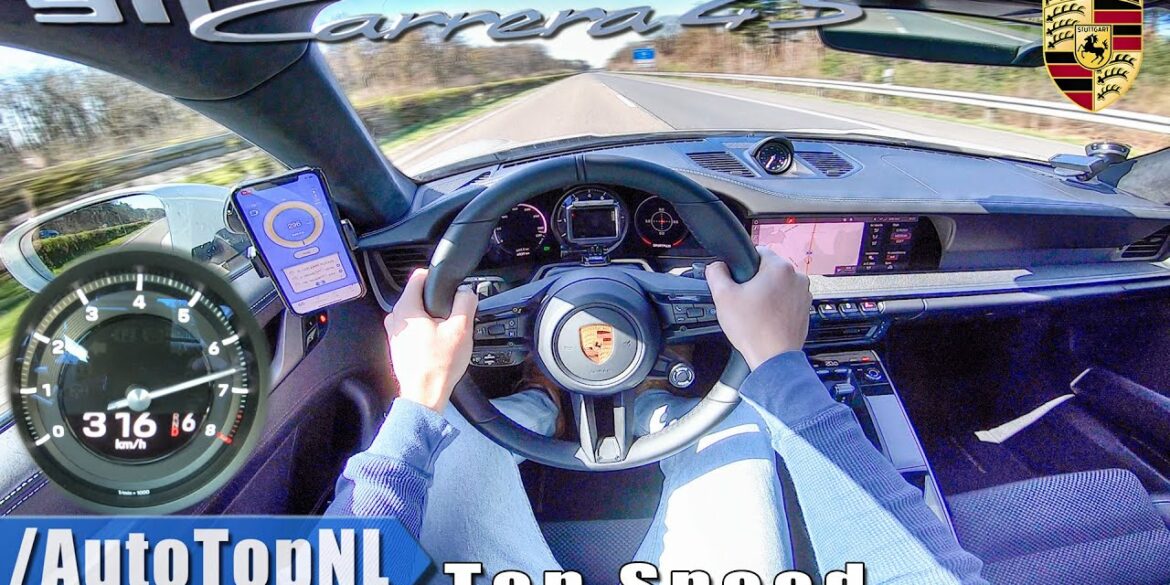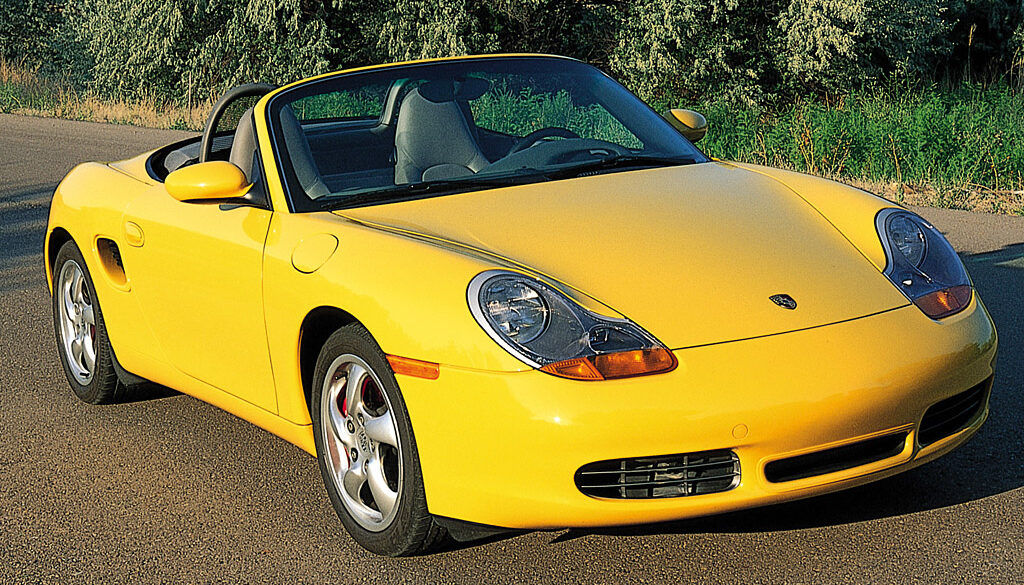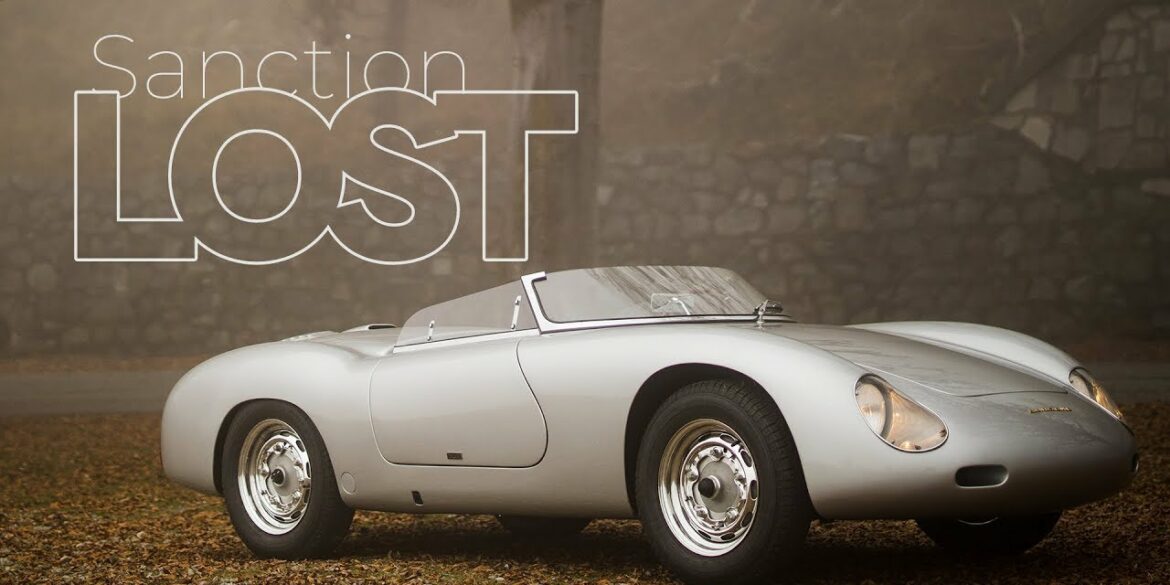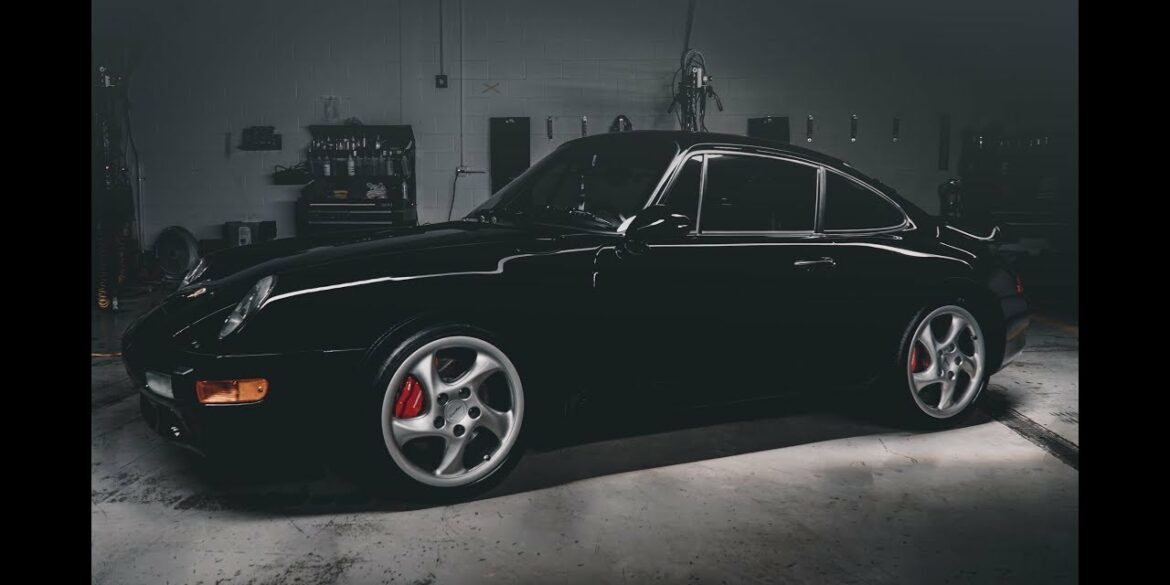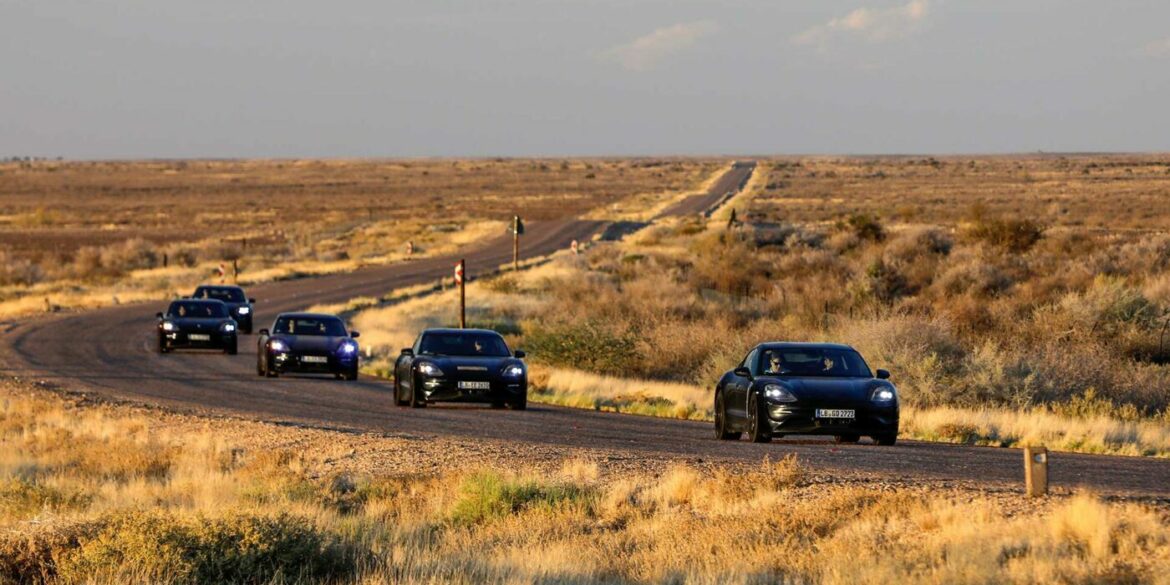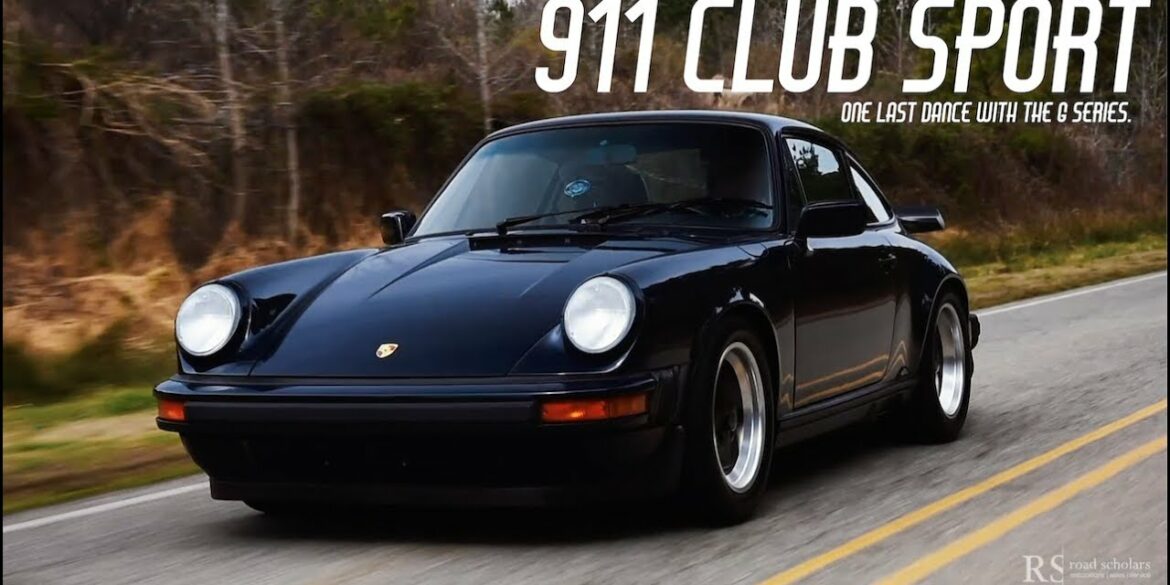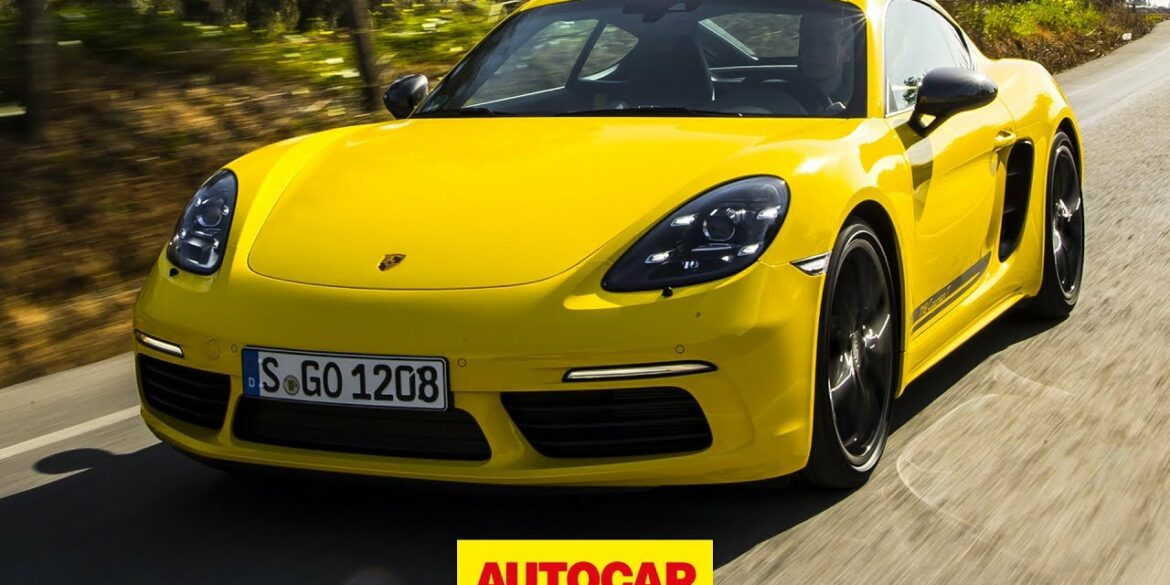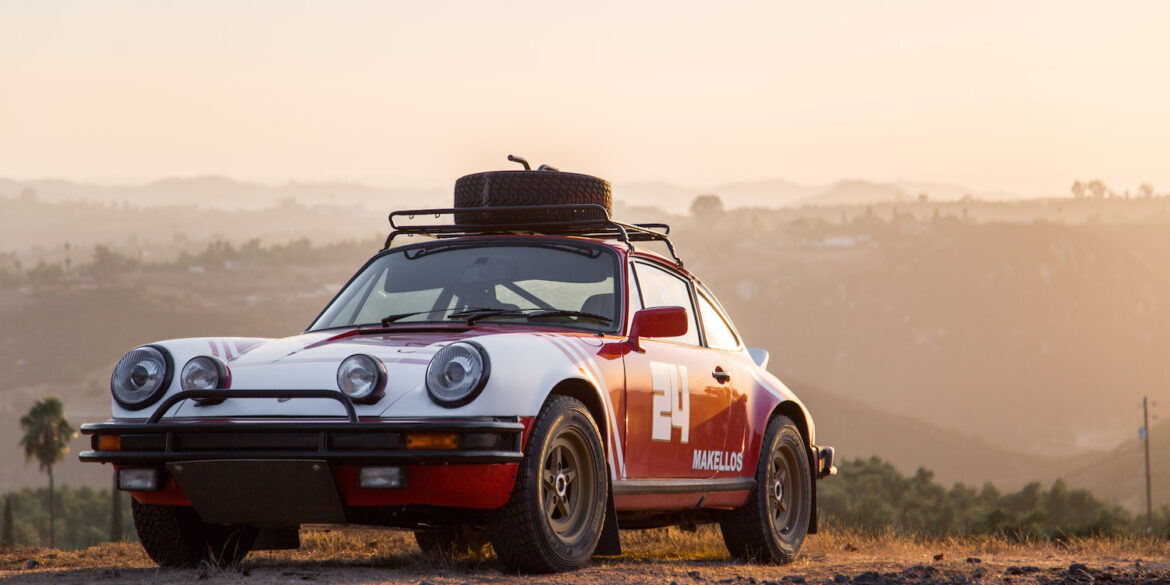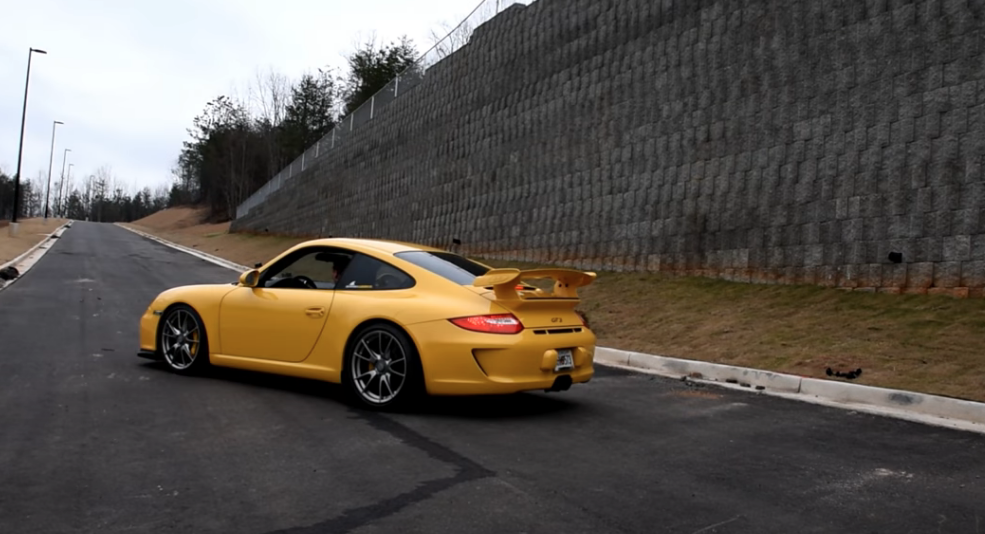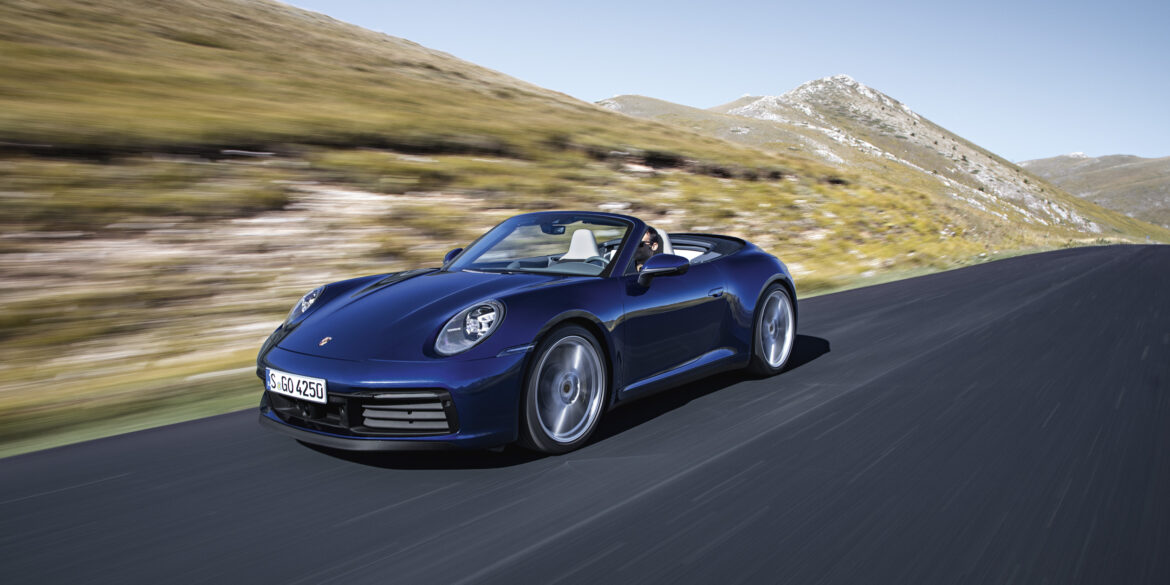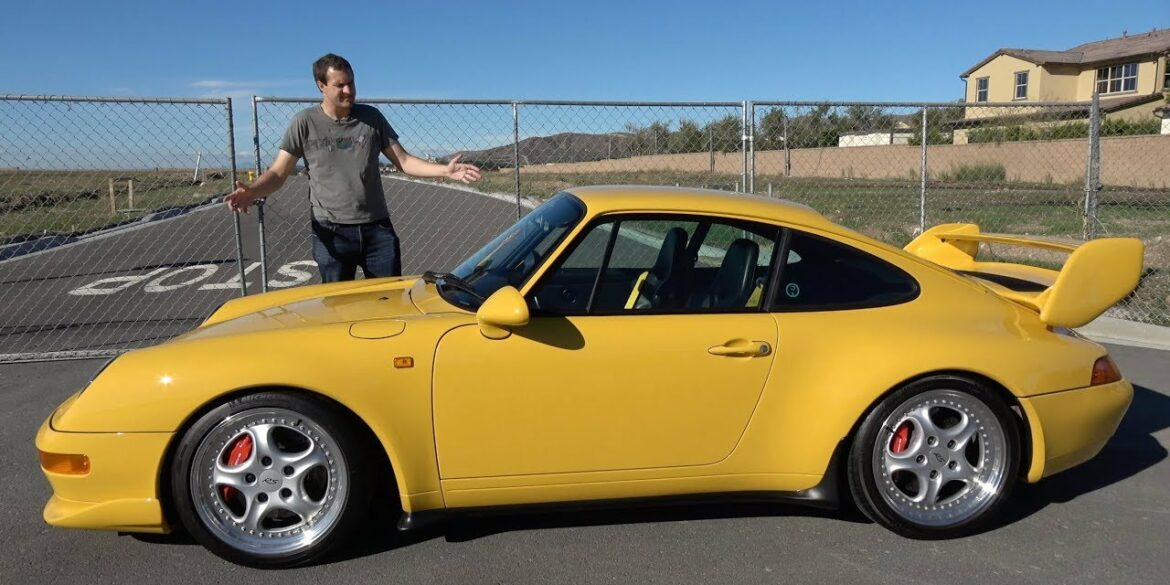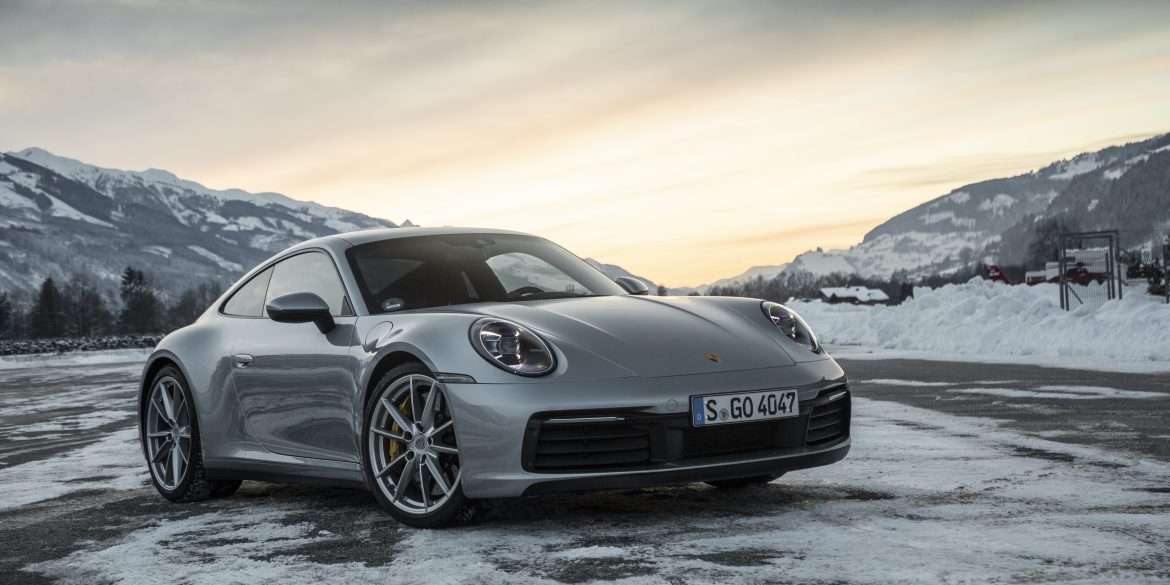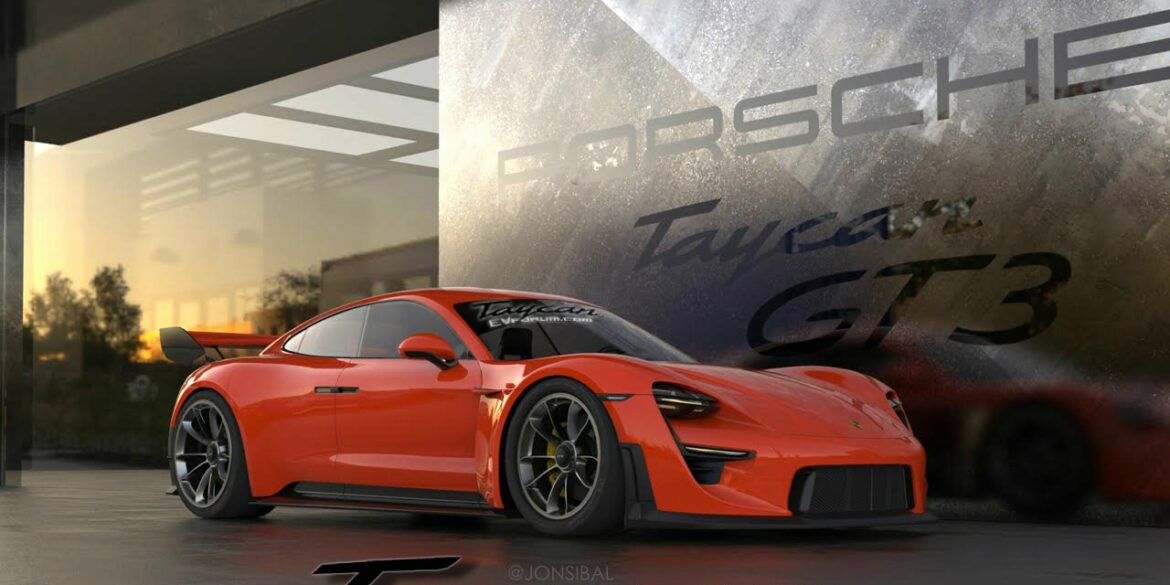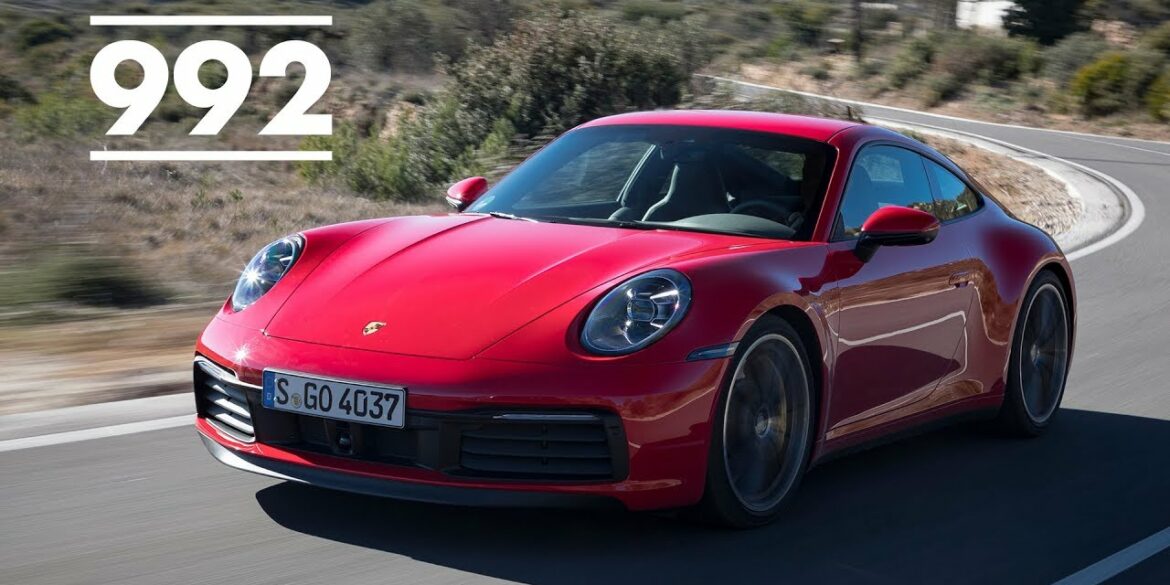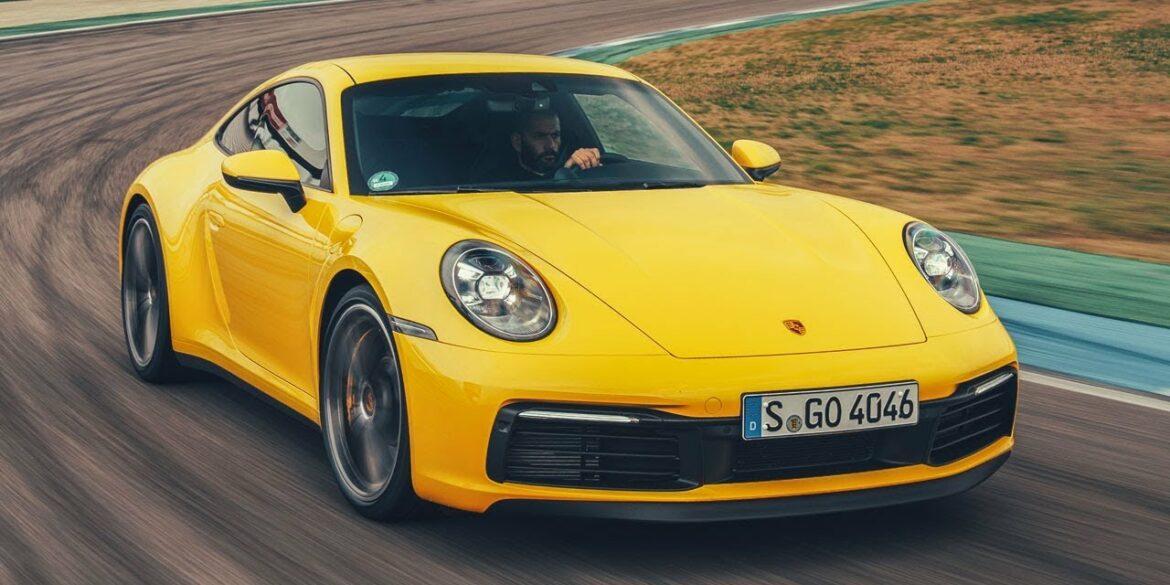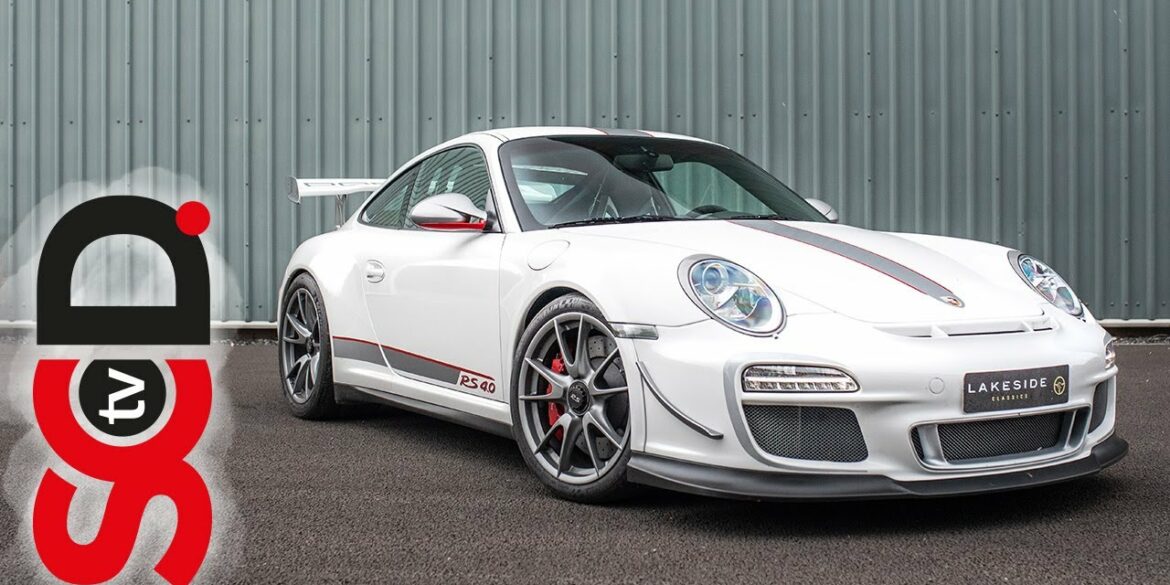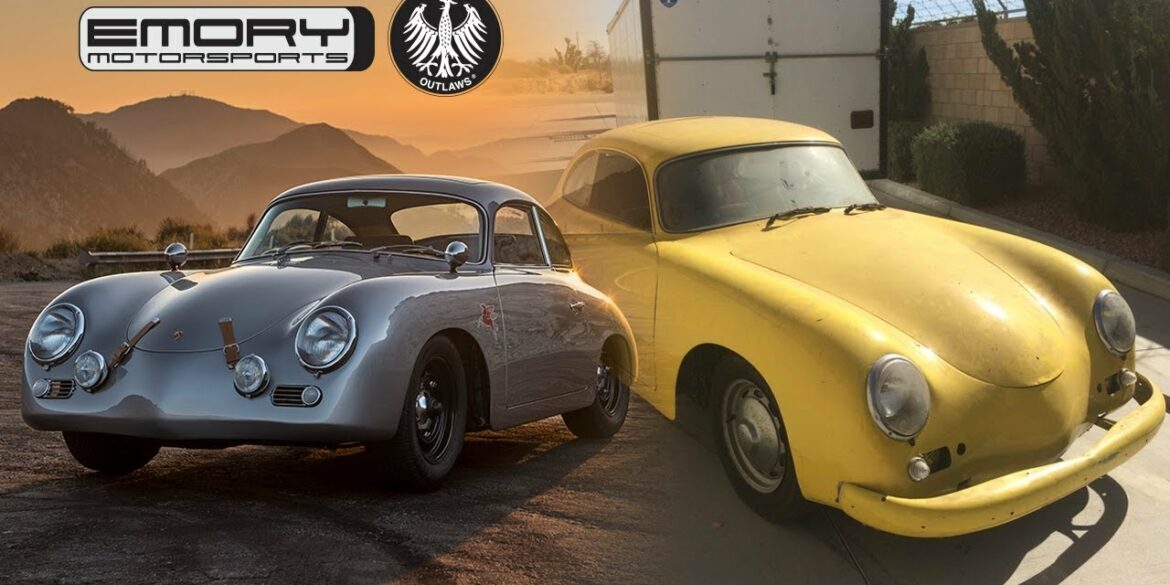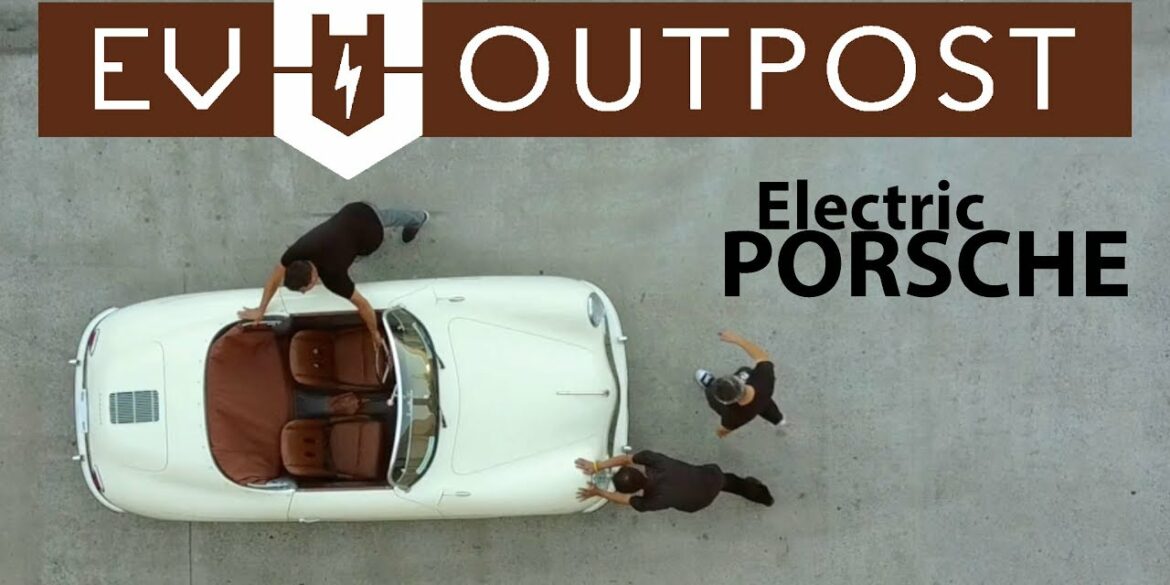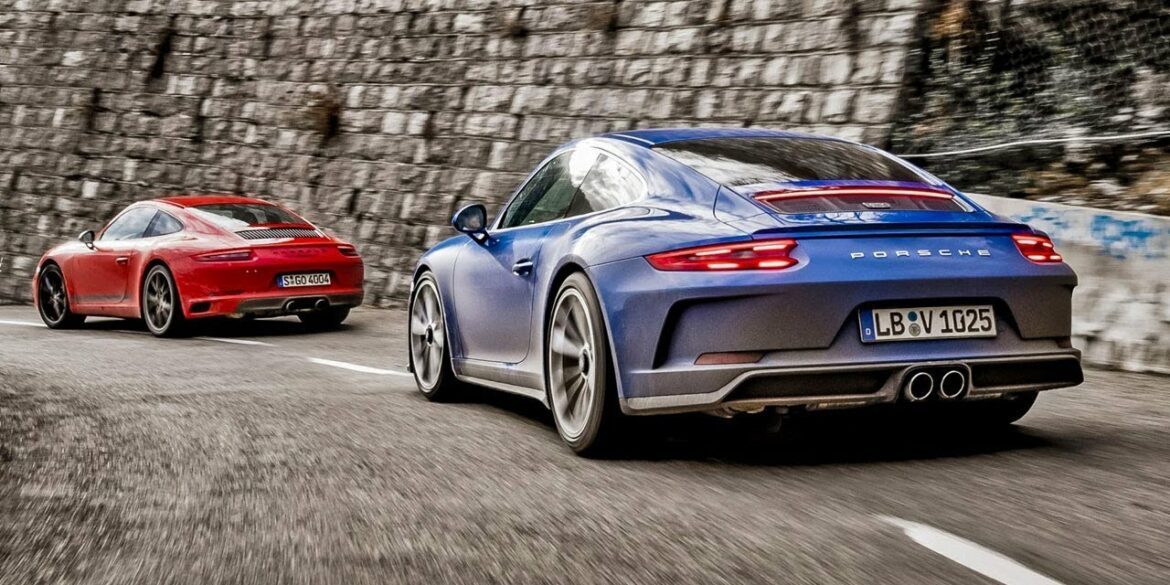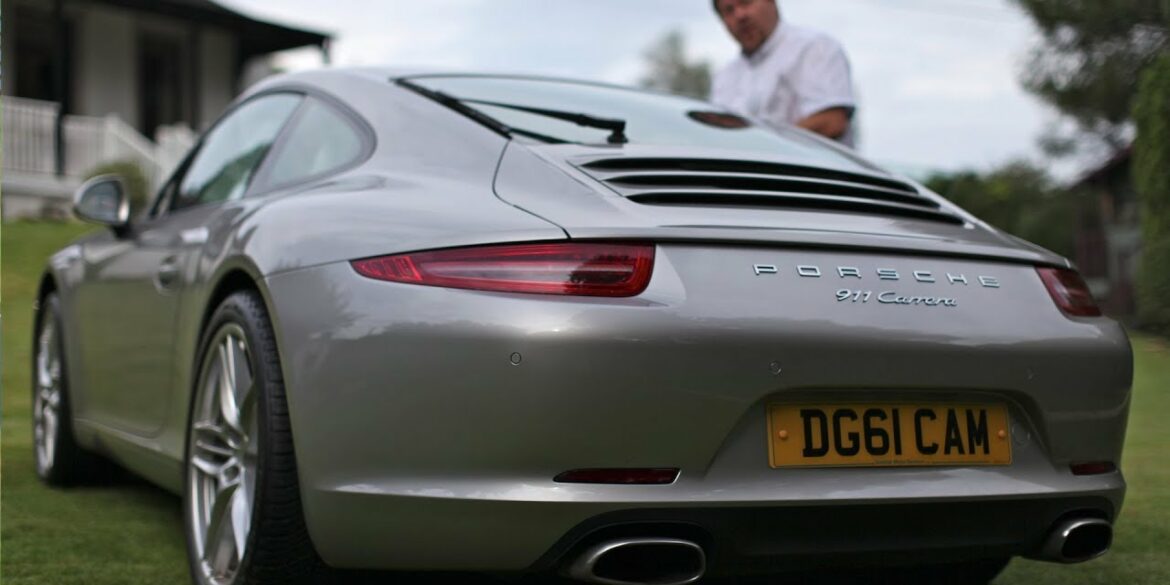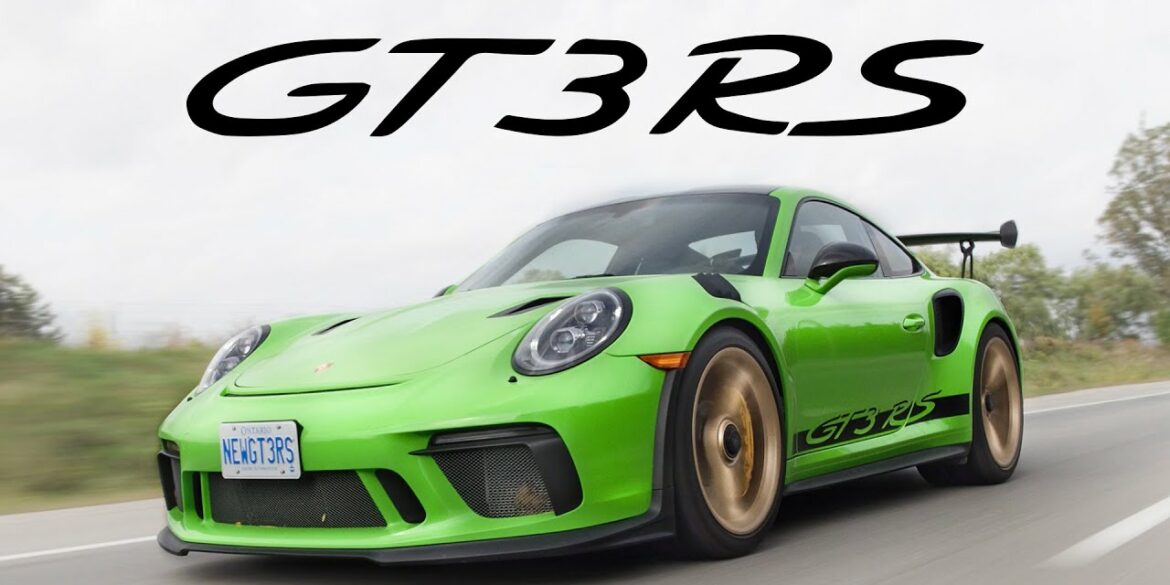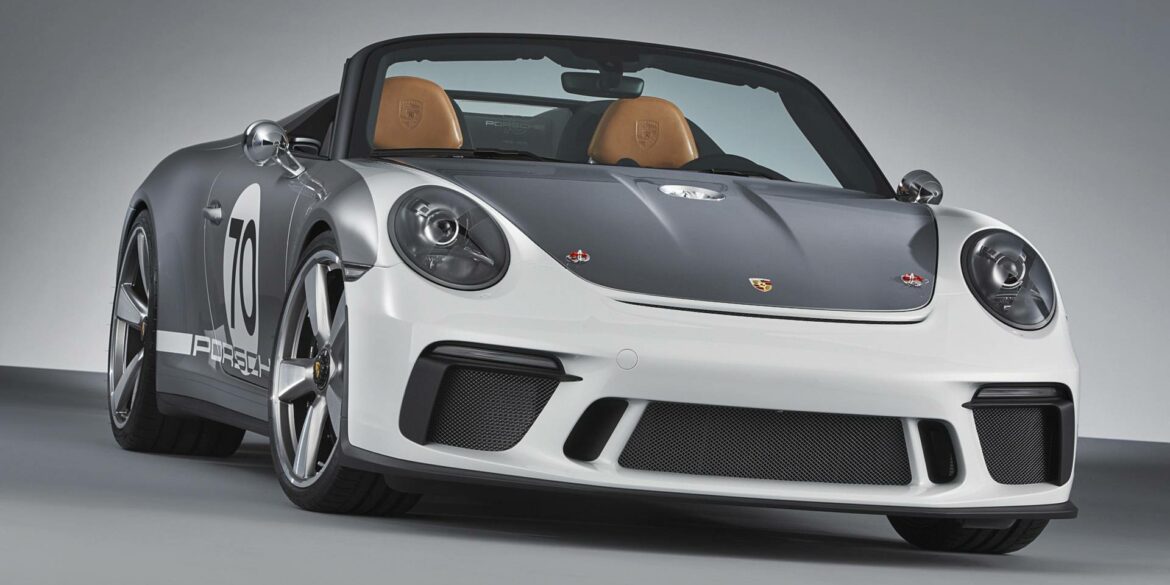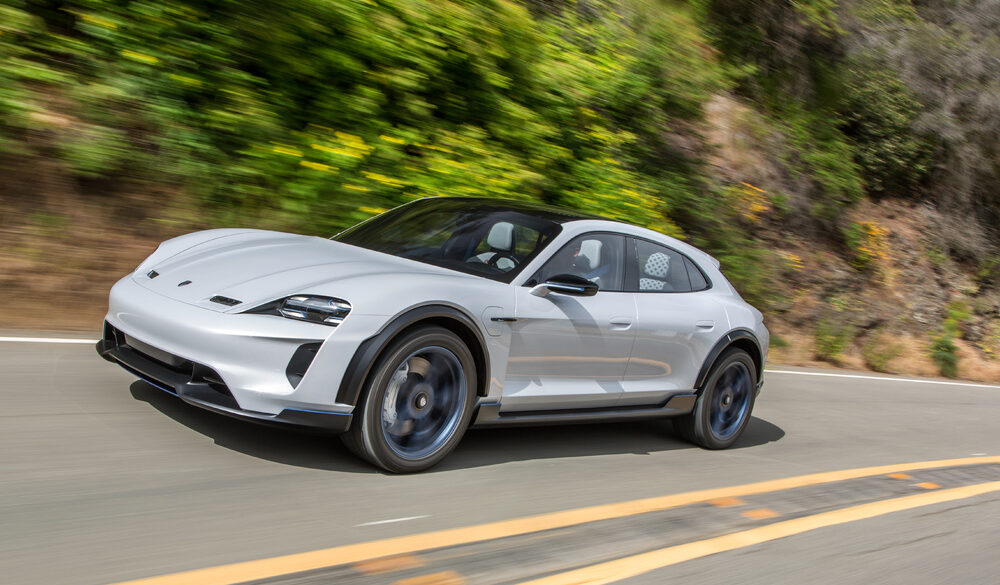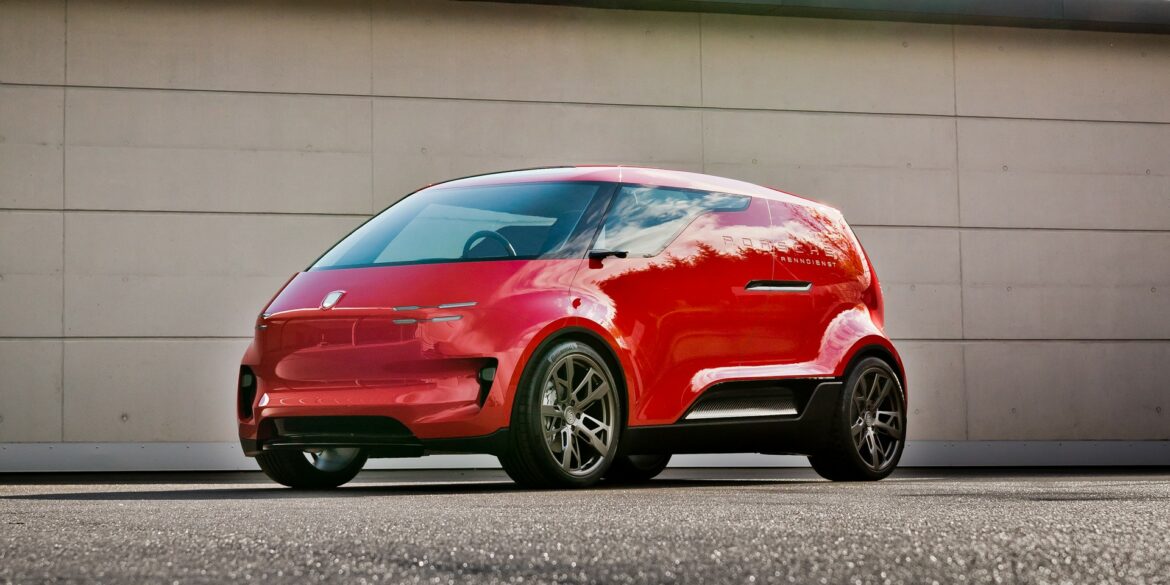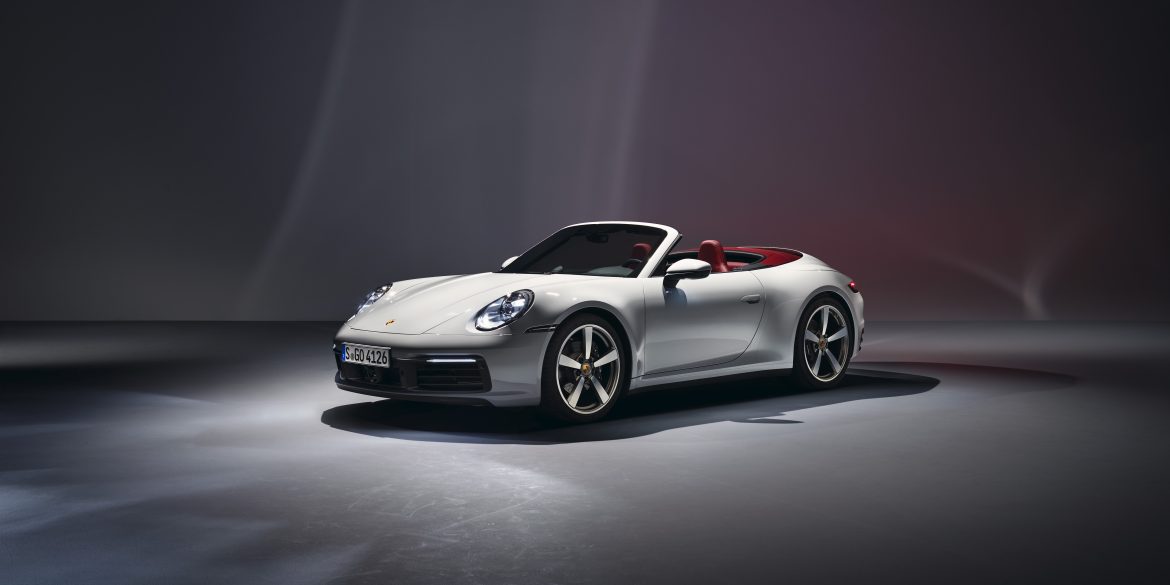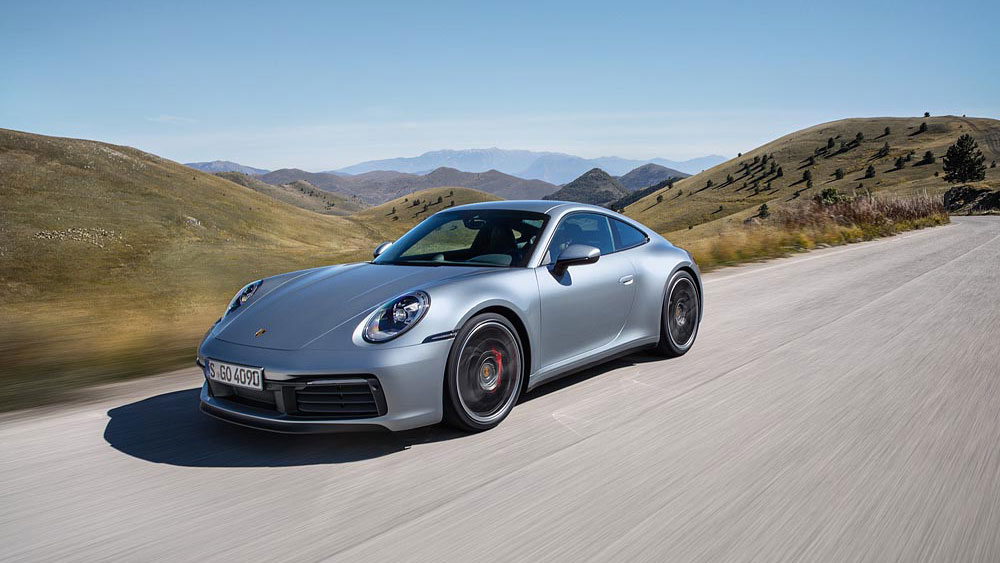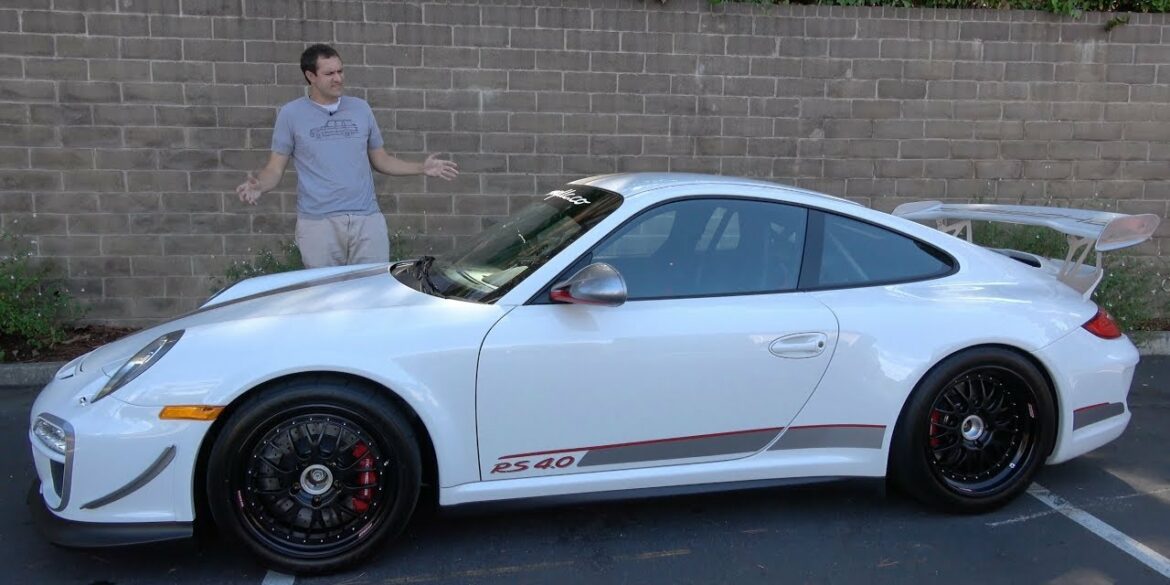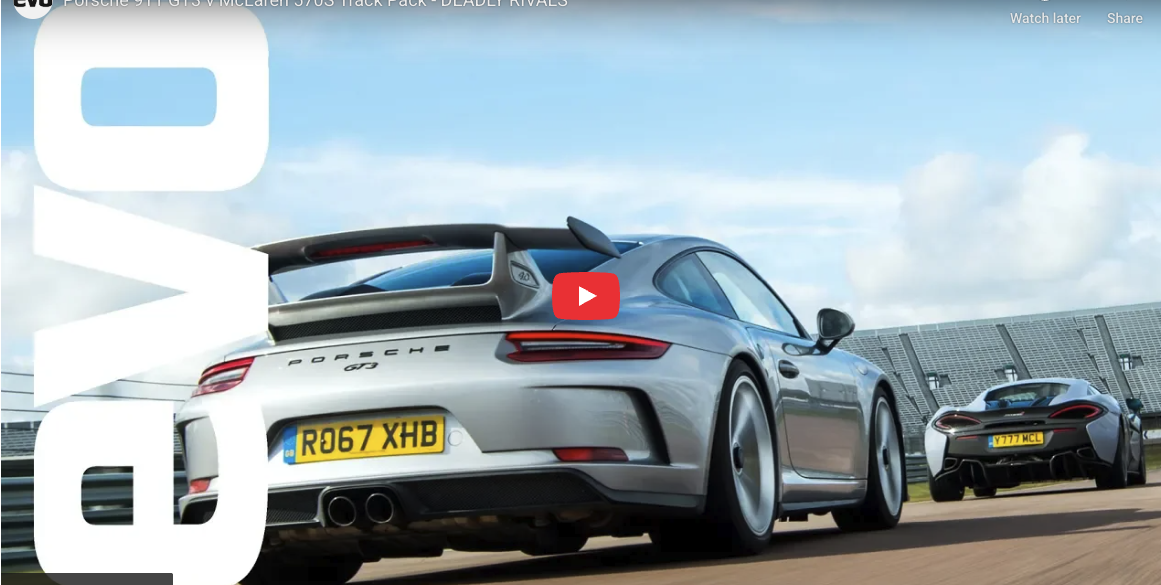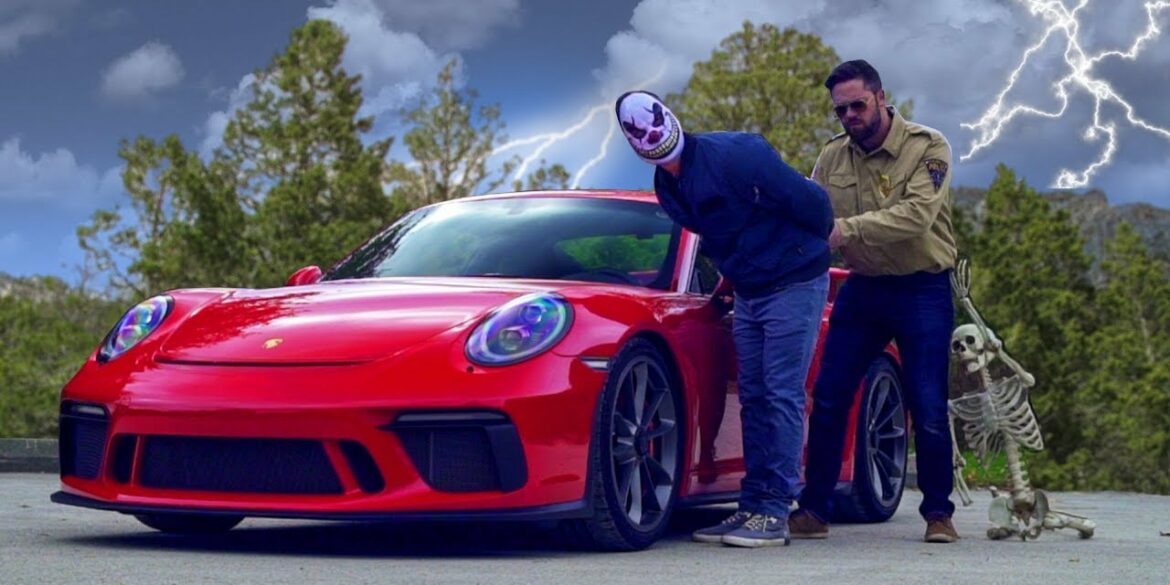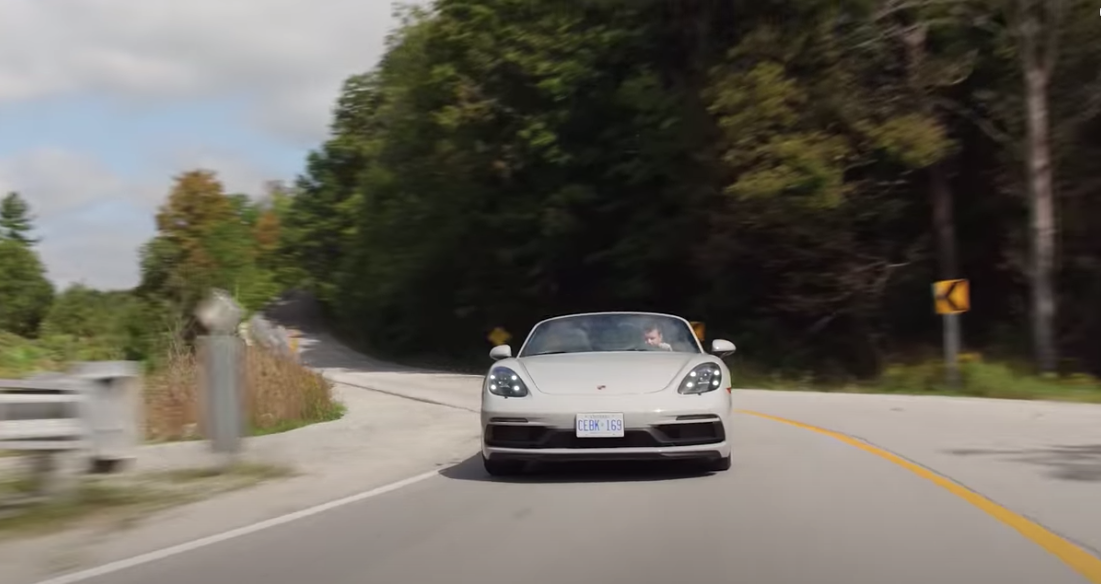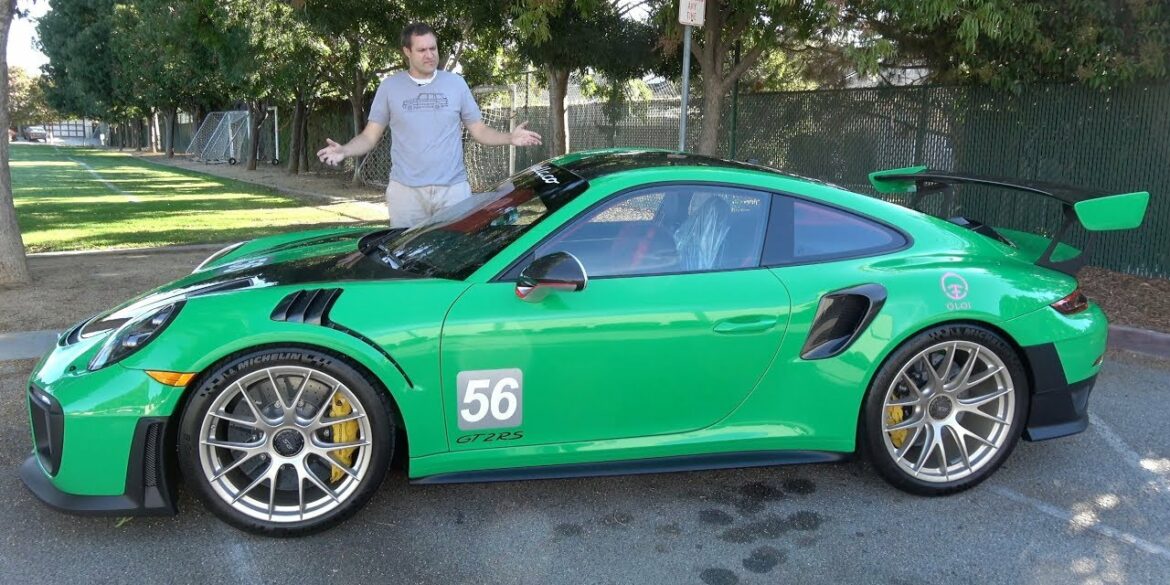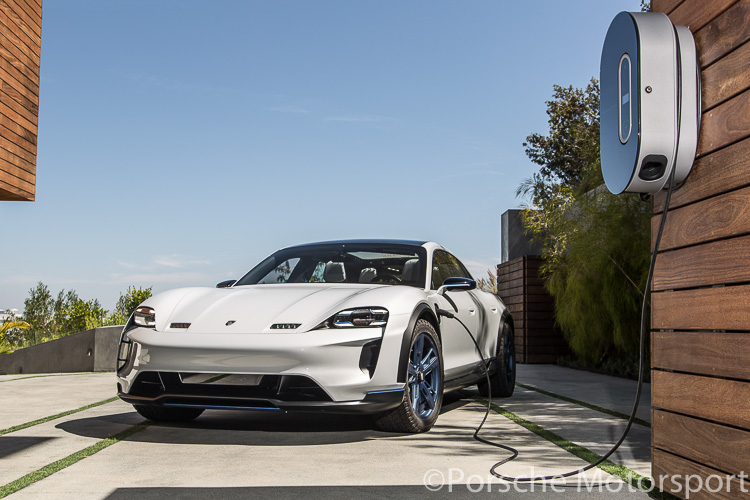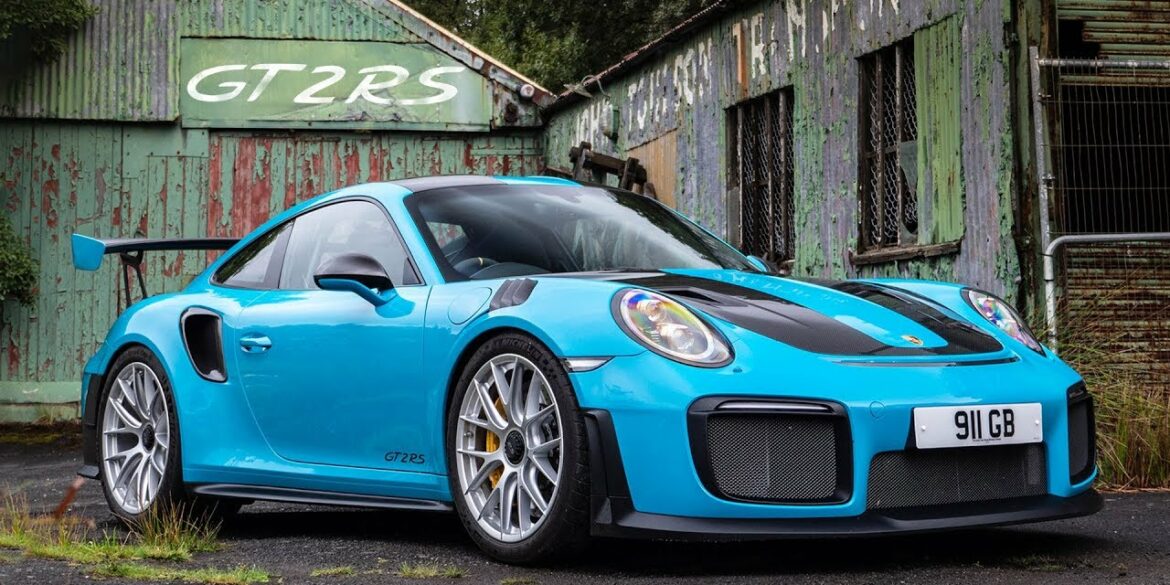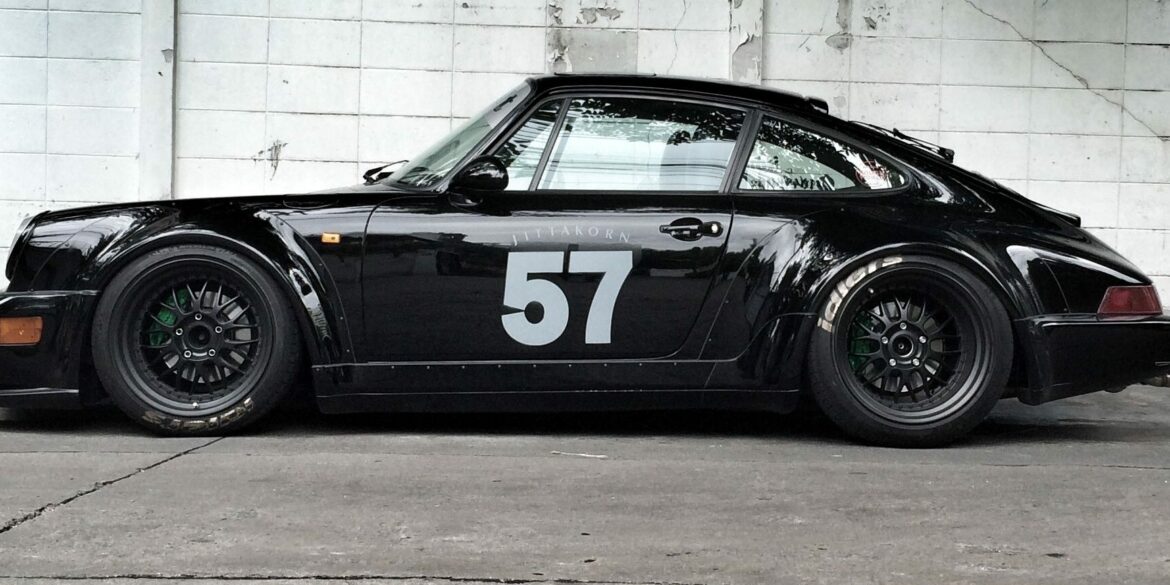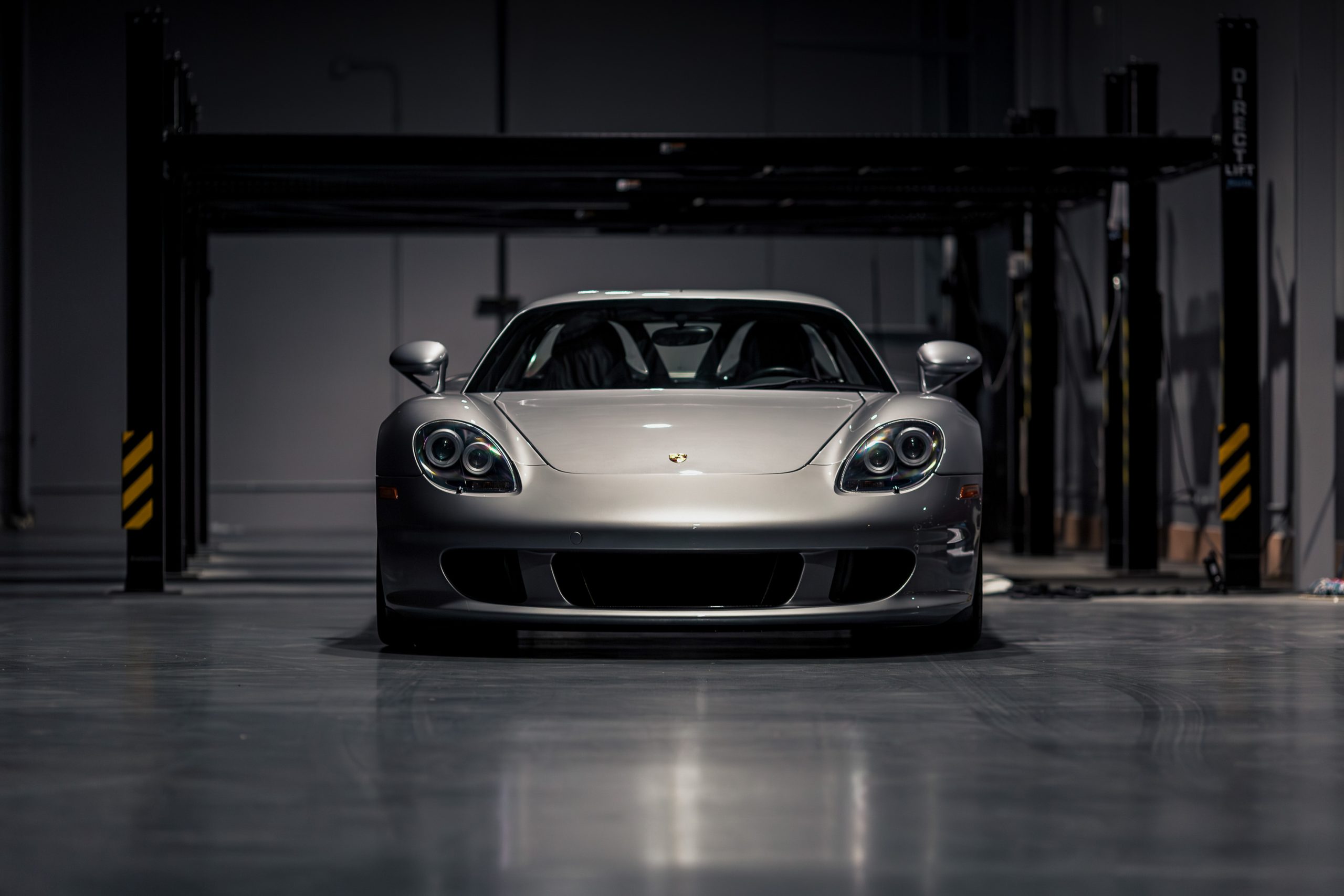Porsche 993 Cup 3.8 RSR On Track Video dedicated to a 1995 Porsche 993 Cup 3.8 RSR driven by Ralph Bahr and Olaf Manthey during the 47th Avd Oldtimer Grand Prix at Nürburgring!...
JoinedMay 4, 2021
Articles3,705
Comments2
I am an Aussie boy, born and raised in Sydney who has now been living in my adopted hometown of New York since 2004. I never say NO to beer or pizza and love my wife and our three little boys. I'm an obsessed car nutcase. I talk about cars all day long. I have been into Porsches, Ferraris and every other cool carmaker since as far back as I remember. Back in 2013 I partnered up with some friends to acquire and operate some of my favorite automotive sites on the planet and Stuttcars was one of those sites. I hope to be a great steward of the brand.
For the 2019 model year, the second-gen Panamera is now a beneficiary of the badge - which actually stands for ‘Gran Turismo Sport’ - that has come to represent the pragmatist’s choice of Porsche automobile. The Panamera GTS is also now available in a long-roof wagon body style, dubbed the Sport Turismo. In totality, this is the vehicle I will be writing about - the 2019 Porsche Panamera GTS Sport Turismo. Traditionally speaking, the GTS version of any Porsche has typified a “sport-plus” version of a mid-level trim within the model range.
The 718 Boxster Spyder is everything you could possibly want in a sports car. The sublime combination of a legendary chassis and naturally aspirated 6-cylinder Porsche engine is accentuated by the emphasis that less is more when done right - and nobody does this better than Porsche’s GT division. Connections with these cars are visceral and emotional, an outcome mutually desired by both Porsche engineers and customers alike. They will never be considered tardy in the right hands. The Spyder is in my opinion, the best sports cars you can buy in this segment.
I’m a 911 fan, through and though – but my last experience of a turbo-powered Porsche was very disappointing. I drove the brand new 992, and it left me thoroughly cold. Today I’m driving a decade old 911 “Turbo” – from the first generation of 997. The old 996 turbo...
The Taycan 4S is the more affordable version of the four-door electric car, but it still offers impressive performance and a high price tag. The Taycan 4S is the sweet spot for Porsche's electric four-door sports car, with more than enough performance for daily driving and enough equipment to feel like it is worth the money. The 4S makes a total of 522 horsepower with its base 79.2-kWh battery pack and 563 horses with the optional one, the 93.4-kWh Performance Battery Plus. Porsche claims a zero-to-60-mph time of 3.8 seconds for the 4S.
They call it the 356 RSR Rod Emory’s parents brought him home from the hospital in a hot-rodded short wheelbase 911, which says all you need to know about the influence cars had in his childhood. Growing up in a household that was very well-versed in custom automobiles (especially Porsches),...
Doug DeMuro Reviews the 2020 911 Carrera S The 2020 Porsche 911 is the newest version of an icon. Today I’m reviewing the new 992 911 and I’m showing you around the latest Porsche 992 911 (Carrera S) — and I’m revealing all of its quirks and features. Then I’m...
One Man’s Perfect 911 Short movie about my Porsche 1969 912 that was turned into my dream hot rod 911 ST with an RSR engine over the period of 4.5 years....
Four years after the introduction of the Cayman S, and three after the regular Cayman, the mid-engine sport-coupe from Porsche received an important update. The facelifted version of the Cayman offered a completely enhanced package. From the exterior to the interior, from the engine to the gearbox and suspension, it was reworked. It might be mistaken with a new model if the Porsche internal coding system wouldn't be the same as on the 2006 Cayman (987C). The engine displacement was increased from 2.7 to 2.9-liter and received direct fuel injection.
Pushing the 4S Hard on Mountain Roads The 2020 Carrera 4S is the AWD variant of the all-new 992-generation of Porsche 911. With a twin-turbo 3.0L flat-six engine making 443 hp, it’s got the power to hit sixty in under three seconds and crack 190 at the top end. There’s...
Porsche 911 996 in-depth review – Ultimate sports car bargain! Is the Porsche 911 996 the best value used sports car you can buy? A decent one can be had for around £15,000 and in this video I explain the model range and review my very own 996. This is...
Carfection Reviews the Porsche Taycan Turbo S Has there been a more anticipated Porsche in modern history? More desirable? Sure, I think most folks would rather take home a Porsche 918 than this electric Taycan, but all the buzz and chatter about that car and its relative position within the then-Holy...
This week Jason takes a trip down to Ashgood Classic and Sports Cars to test drive an iconic Porsche, the 993 RS Clubsport. This lightweight road racer is just the type of car we love....
Feast Your Eyes on These Custom 959s The Porsche Museum has a couple of very special cars on display right now. They’re two of seven custom 959s that were built for an Arab prince in the late 1980s, according to Motor1. The Porsche 959 is an extremely rare car already,...
You Can Bet This One Will be Fast The Porsche Taycan will be the first electric car that the Texas-based tuner company Hennessey Performance will modify and sell. CEO John Hennessey confirmed this by saying, “We felt that the new Porsche Taycan was the right platform from which to modify...
A Close Up Look at the New Taycan The first impressions of the new Porsche Taycan are now starting to roll out, and the publication Autocar recently posted a video review of the car. The Porsche Taycan is the company’s first all-electric car, and it’s a special one. The vehicle...
Nordschleife Hot Lap In A Porsche 964 RS vs. 992 Carrera S Porsche 911 Carrera RS (964), Porsche 911 Carrera S (992); Driver: sport auto’s Test Driver Christian Gebhardt; Track: Nordschleife; Lap times: 7.30, 41 min (992), 8.23,12 min (964); Tyres: Pirelli P Zero NA1 (992), Pirelli P Zero Trofeo...
It’s Not as Stock Model S In recent testing by Tesla, the company managed to get a Model S around the Nurburging track in just 7 minutes and 23 seconds, according to The Supercar Blog. That’s a full 20 seconds faster than the Porsche Taycan. Tesla has two Model S...
Porsche 718 Cayman GTS VS BMW M2 It’s a shootout between the Porsche 718 Cayman GTS and BMW M2. Taken from Episode eight of Series 27, first broadcast 25th October 2018....
...
Reviewing The Sweet Spot 911...
Jack Rix Takes a Closer Look The Porsche Taycan just debuted. We watched the live stream and reported on the car and its reveal. The new Taycan is an important car for Porsche, and because of this the company wants to get as much coverage as possible. That’s why the...
Porsche’s Game-Changing Electric Car The Porsche Taycan was revealed today at 9 am. In an extremely elaborate showing of the car, the company had the live stream presentation span across three locations around the world: Germany, Canada, and China. After a whole lot of discussion about what the Taycan means...
Porsche Taycan World Premiere on September 4 at 9 am And so the future begins. Porsche’s Taycan will be one of the most advanced production all-electric cars the world has ever seen. Porsche will reveal the car in all its splendor tomorrow, September 4th at 9 a.m. eastern time. You...
Porsche’s Electric Car Is Wicked Powerful The Porsche Taycan is the electric car that will help change Porsche and the rest of the automotive world. The vehicle is a marvel of automotive engineering and recently set the record around the Nurburgring. Recent reports indicate that the car can make 700...
A Unique Tribute From its humble beginnings, this 1970 911 enjoyed a varied life, most notably as a rather tasty ‘73 RS replica. It was running well, and beating most-everything off the line around the New-South Wales area of Australia, right up until the 3.0 SC engine gave up with...
The Electric Porsche’s Cabin Is Gorgeous The Porsche Taycan is the company’s first all-electric car, and it will be an impressive machine by all accounts. The company will reveal the car in full on September 4 of this year. That’s not far away, and the company has been teasing the...
Greatest Porsche GTs – The Ultimate Head to Head Porsche has been making GT cars for 20 years, and its latest offering is the 2020 718 Cayman GT4 – its mid-engined sports car which returns with a naturally-aspirated flat-six engine. Praise be. But while it’s a great Cayman, just how...
More Powerful Than Most 911s We’re pretty firm believers that sports cars are always going to be more enticing than SUVs, but the Porsche Cayenne Turbo S E-Hybrid that Porsche recently released wants to challenge that assertion. The SUV is a super-powerful hybrid that can sprint to 60 mph in...
Porsche 911 GT3 RS (997.2) Drive Through the Hills As the Porsche 911 GT3 dynasty turns 20 years old this summer, Dan Prosser takes one of the most iconic GT3 derivatives, the 997.2 GT3 RS, for an early morning Rise & Drive....
A great review in the mountains of Switzerland A great review in the mountains of Switzerland ...
Doug Demuro Drives the 996 GT2 The 996 Porsche 911 GT2 is my favorite 911 — and today I’m going to explain why it’s so great. I’m going to review the 996 GT2 and show you a few of my favorite quirks and features, then I’m going to drive the...
993 Turbo S – The Last Air Cooled Porsche Thanks to our friends at Lakeside Classics we get up close and personal with the legendary Porsche 993 Turbo S for a day in North Wales with stunning scenery and weather. The Porsche Turbo is world renowned as a fast and capable...
Porsche Carrera GT The Porsche Carrera GT has become one of the most iconic and sought after Porsche models in the realm of exotic car idolization and ownership. It is hard to believe, that things didn’t really start off that way. When the Porsche Carrera GT was released in 2004, it...
Porsche 911 Carrera 4S Video Review The Porsche 911 has always been an analogue sports car. Whereas Ferrari and others chased the digital revolution from its earliest onset, Porsche preferred to keep things pure and mechanical. But such an approach was never going to be timeless and thus the 911...
Features like Porsche’s active suspension and the new-for-992 “wet mode” are standard on the Carrera 4 variants, but the electronically controlled limited slip rear differential (standard on the 4S), as well as ceramic composite brakes (cast iron rotors are standard). The current 911 Carrera 4 Cabriolet is equipped with PASM (Porsche Active Suspension Management). The twin-turbo flat-six has 379 hp and 331 ft lbs of torque.
Porsche 911 (964) Sales & Production Numbers Over the life of the Porsche 911 (type 964) it was considered a sales success. While Porsche was struggling at the time thanks to its own issues as well as a big recession globally, the 964 nonetheless sold enough to keep the company...
First Drive in the 992 Carrera 2S The KING of Sports cars!! The motoring icon, the Porsche 911! Let’s explore the new one in a way only we can at RBR. Going 55 years strong, the 911 is back with a whole new 8th generation Model, internally designated 992. And...
On Board Hot off the heels of the unveiling of the new Porsche 911 RSR, we’re looking back with the classic 1973 Porsche 911 Carrera RSR charging up a wet hill at Festival of Speed...
Porsche 991 GT3 RS on road and track Looks like a 911, drives like a hypercar? The Porsche 911 GT2 RS (991.2) seems special to us. Chris Harris puts the exciting new Porsche that’s “scarier than the Widowmaker” through its paces....
The Carrera 4 is the base model 911, equipped with all-wheel drive. It starts at $109,850 for 2022, which is about $7,000 more than the standard rear-drive Carrera. Other than the additional all-wheel-drive system and the 150 odd pound increase in curb weight, the Carrera 4 is identical to its rear-drive sibling. It gets the same 379-hp, twin-turbo 3.0-liter flat-six engine. The twin-turbocharged 3.0-liter flat-six has 379 hp.
Porsche 930 Turbo – One of the Greats Remember that episode where Damian mistakenly bought a broken Porsche 911 from Silverstone Auctions? The 930 Turbo without a turbo? Well it’s finally back, fixed, and glorious, thanks to Emblem Sports Cars. This week, TheCarGuys take the revitalised Turbo out for its first...
Is this the best driving classic 911? This is a great reviews of the 911 ClubSport. The 1987 Porsche 911 Carrera Club Sport the best driving classic 911 in the real world? It has lots going for it, lightweight, tweaked engine and suspension and 231bhp from its 3.2litre air-cooled flat...
Yep, Singer Is a Decade Old Now Singer Vehicle Design has been thrilling motoring enthusiasts everywhere for 10 years. The company is known for taking old Porsches, restoring them and then modifying them with extreme attention to detail. To help mark the 10-year milestone, the company will bring two cars...
POV Drive In A Porsche 911 3.0 Carrera RSR Factory Porsche racer Patrick Long has a million-dollar historic 911 3.0 Carrera RSR from 1975 to pedal, less than half the horsepower of the fastest cars in the class, and uses every ounce of talent and racecraft he owns in a...
Porsche 904 Bergspyder Pictures...
Porsche 904/8 Carrera GTS Pictures...
Make no mistake that the Speedster is an absolutely fitting conclusion to the 991-generation. The Porsche 911 Speedster is an ingenious amalgamation of the latest technologies on offer, and the more simple ingredients that have been a principle of driving enjoyment since the invention of automobiles. A 502-horsepower engine, without turbochargers. A modern transmission, with just one clutch. A state-of-the-art suspension and chassis, with an unsullied purity. The list goes on. Perhaps the only drawback is that the Speedster’s rarity and price.
The Auratium Green 356 A Type 2 Please turn on Closed Captions to enjoy this film in English. This is the story of following a trail of gas into the a tractor barn. It is a story of a family legacy of mechanical inclination and a desire to learn from...
A Bold Claim The Porsche Taycan is an important car for the company. It has to be truly good for the company to compete as it would like to in the market. If the CEO’s claims are true and the power and range ratings are accurate, we can see no...
1953 Porsche 356 America After decades collecting dust in a storage building in the California desert, a 1953 Porsche 356 America coupe is returned to the road and reunited with the 93-year-old original owner. 2018 Winner of the Los Angeles Movie Awards Best Documentary Short. A film by Red Guitar,...
Vonnen Performance Offers Glimpse Into What a Production 911 Hybrid Could Look Like Here we are in the year 2019, yet even the thought of a fully-electric 911 feels sacrilege; but a hybrid, on the other hand, is certainly inevitable and likely not that far off. After all, Porsche’s own...
Porsche Panamera Reaches Decade-Milestone Shortly before it was released, the Panamera could certainly have been considered a gamble by Porsche. While it is true that their SUV experiment conducted a few years earlier – with the Cayenne – was an overall success, further diluting its lineup with another 4-door vehicle...
Modified Slant Nose Turbo (930) On Road The 930 Turbo being reviewed in the great POV video. Nice footage and a good sense of the fun of driving a car like this....
The Porsche 911 GT2 RS MR | Chris Harris Drives The Porsche 911 GT2 RS Manthey Racing has a long name. But the story is quite short and simple: it’s a tuned GT2 RS by Manthey Racing, and it’s the fastest road-legal car to lap the Nürburgring....
Porsche 993 GT2 “Drive It Like You Stole It” Video I was invited by @9ine11 to check out his epic Porsche 993 GT2- worth approximately $2 million now, one of just 57 built. However this guy doesn’t believe in garage queens, and regularly drives this car hard and fast, as...
Introducing the all-new Porsche 911 Introducing the all-new Porsche 911! Rolling in with a six-cylinder, twin-turbo 3.0-litre that can hit 450hp, this new 911 992 is set to be THE sports car to beat in 2019! The question is, does the new 911 maintain the heritage and reputation built by...
PistonHeads Compares Two Great Sports Cars The new Porsche 911 has grown in size and is heavier than ever. So does it still thrill and entertain the way a true 911 should? In this video, PistonHeads’ Dan Prosser answers that question and wonders if for the same money, you’d be better...
Awesome Acceleration & Top Speed Runs in a 992 4S Multiple top speed runs on the Autobahn by our favorite reviewer in a new 992 911 Carrera 4S....
In 2000, Porsche gave us the Boxster S. With a 3.2 liter naturally aspirated Flat-6, it was good for 250 bhp and 225 ft lbs of torque, up by 25% on the base 2.7 liter Boxster. Hardward changes, a 6-speed gearbox and all this extra power and torque transformed the Boxster driving experience. From behind the wheel, the Boxster S rushes forward in a way that is missing from the base model, that torque increase really making itself known, especially in the midrange. 0 to 60 mph now takes 5.60 second (compared to 6.5 for the 2.7 L base model). Top speed is 161 mph and the quarter mile is 14.1 seconds.
Porsche 356 Carrera Speedster Zagato Please turn on closed captions to enjoy this film in English. Zagato is turning 100 years old this Friday, and over the course of the past century the Milanese coachbuilder has been quite prolific—Andrea Zagato, current CEO and the third generation of the family to run...
Chicago Auto Pros Gives This 993 Turbo The Ultimate Detail Treatment We spent 130 man hours with this 993 Porsche 911 Turbo, It was in desperate need for some love and we gave it the royal treatment it deserved....
Porsche Taycan In Final Testing Phase Before September Reveal The Porsche Taycan has rather quietly, become on of the most anticipated cars to come out of Stuttgart in a long time. The fully-electric car has the potential to be precedence-setting, both within the company itself as well as the broader...
Porsche Targeting Production Car Lap Records Away From the ‘Ring While the Nürburgring unarguably remains the de facto proving grounds for automakers to test the mettle of their performance halos, Porsche is also looking to conquer some of the most iconic North American racetracks with its production-spec 911 GT2 RS....
Charles and Tim – One last dance with the G series. This is a great review of the 911 ClubSport. The 1987 Porsche 911 Carrera Club Sport was underrated and rare. There is no doubt it is one special 911....
Is this the best value Cayman? Based on the entry-level Porsche 718 Cayman, the Cayman T is aimed at the keenest sports car drivers. It gets no more power, but several key mechanical upgrades to the chassis....
A True Head Turner We included a car from Makellos Classics in a list of our favorite Porsche custom cars in 2018, so when we were alerted of their most recent build we were pretty excited. The team at Makellos Classics got its hands on a European-spec 1978 Porsche 911SC....
Sharkwerks Porsche 911 GT3 997.2 Makes Some Spectacular Sounds Tyler’s speed yellow GT3 with one of the best sounding exhausts I’ve ever heard! This one is 1 of 7 in the US in speed yellow with the lightweight carbon buckets....
Top down summertime driving in the current 911 Carrera 4S Cabriolet is about as good as it gets. It checks all of the right boxes, as while it has matured into almost a GT-type car; it still boasts more performance than ever. Like the rest of Carrera S models, the Carrera 4S Cabriolet is powered by the same 3.0-liter twin-turbo flat-six that makes 443 horsepower and 390 ft lbs of torque. It comes standard with the same eight-speed twin-clutch automatic transmission.
Porsche 911 Carrera RS Is the Forbidden 993 The Porsche 911 Carrera RS is the forbidden 993. It’s the lightweight, race-focused 993 that was never sold in North America — and yet, today I’m reviewing the 993 Carrera RS here in the United States, and I’m going to show you...
The perfect daily driving sports car with an all-weather, remarkably high-performance envelope. Like the rest of Carrera S models, the Carrera 4S is powered by the same 3.0-liter twin-turbo flat-six that makes 443 horsepower and 390 lb-ft of torque. It also comes standard with the same eight-speed twin-clutch automatic transmission with the same gear ratios, except the 4S with an added clutch and differential up front.
Hopefully, Porsche Pays Attention The Porsche Taycan will come to the market as one of the company’s most highly-anticipated models ever. It’s an important car, too. It has a fully electric powertrain and the rumors say 600 hp. It will have a range of around 310 miles and can charge...
Carfection Gives Us Their Initial Thoughts Henry Catchpole reviews the new Porsche 911 on both road and track in Spain. With more power but also more weight, is it still the sports car to beat? And which is better – rear-wheel-drive S or the quicker 4S?...
First Drive in the 992 Carrera 2S Doorhandles that pop out? Cupholders that bump your elbows? Pinky fingers getting trapped? Chris Harris delivers some actual consumer advice… and then goes really sideways. This is his first drive in the 992 Carrera S....
GT3 RS 4.0 RS Ride & Review Our first video with Henry at Lakeside Classics and what a way to start – with the keys to a 4.0RS! ...
How we made the 1959 Emory Outlaw RHD Coupe in GT Silver How we made the 1959 Emory Outlaw RHD Coupe in GT Silver. This is the inaugural installment of a class of videos we call “walk arounds” to give our friends and fans an inside look at how we do...
How to Convert a Classic into An Electric Car...
Comparing The Analogue Porsches A clash of the analogue Porsches? It’s a David vs Goliath battle of retro-flavoured 911s as Top Gear Magazine takes a look at the Porsche 911 Carrera T vs the Porsche GT3 Touring and which car makes us smile more on a series of epic roads...
Porsche 911 Carrera RSR Turbo 2.1 On Track This is a 911 that wrote a big part of Porsche history. It was the first turbo powered Porsche 911 and the first turbo powered Porsche at Le Mans. This chassis debuted in the hands of Gijs van Lennep and Herbert Müller...
The Base 991 Carrera Video Review If you want to buy a new 911 now, you’d better be prepared to spend well into six figures to get a car with every option under the sun – lest your car be undesirable and a bit naff. That wasn’t always the case –...
991.2 Porsche 911 GT3 RS Review We go for a drive in the 2018 Porsche 911 GT3 RS. And we absolute love it. Wow....
Porsche is celebrating their 70 years in the making with the Porsche 911 Speedster Concept car. With the Carrera Cabriolet 4 body as its canvas, the Speedster concept pays homage to its predecessors - most notably, the Porsche 356 1500 Speedster. The limited production Speedster is immediately distinguishable from the current 911 line-up, with its “double bubble” tonneau cover and other unique offerings and design tweaks.
The Mission E Cross Turismo concept is a more outdoorsy activity-wagon version that was first displayed at the 2018 Geneva motor show. This concept was built as a drivable car. Porsche essentially took the Mission E project’s hardware in development, so it serves as a snapshot of where things stood about two years into a five-year program.
The Porsche vision “Renndienst” (2018; 1:1 hard model) is the free interpretation of a family-friendly space concept for up to six persons. The design team designed a futuristic “space shuttle“ with exciting proportions. The study shows how the Porsche design DNA with its characteristic surface modeling can be transferred to an unknown vehicle segment for the brand.
The Porsche 911 Carrera S Cabriolet also features a heated glass rear window and integrated magnesium support elements. The automatic fabric top opens and closes at speeds of up to 31 miles per hour in just 12 seconds – one second quicker than before. The 992 Carrera S Cabriolet gets a twin-turbo 3.0-liter flat-six with 443 bhp and 390 ft lbs of torque. That is 29 more horsepower and 22 more ft lbs of torque than the outgoing model.
If the base 911 coupe doesn't do it for you, maybe the Carrera S coupe gets you over the line. For about $20k more, you get more horsepower, torque vectoring and bigger wheels. The Carrera S uses a version of the 3.0L twin-turbo flat-6 that generates 443 hp and 390 lb-ft of torque. Torque vectoring allows different amounts of torque to be distributed between drive wheels on the same axle. This means the inside wheel can turn slower than the outside wheel for improved cornering.
Removing the roof the car is supposed to have little impact on its chassis stiffness and curvy road prowess, but Porsche tells us that the current generation 911 Cabriolet drives just as well as the coupe. Powering the base Cabriolet is the same impressive turbocharged flat-six engine that makes 379 bhp @ 6500 rpm and 331 ft lbs of torque. The base cabriolet can do the 0 to 60 mph run in 4.2 seconds flat. With the optional Sport Chrono Package that drops to 4.0 seconds.
The most basic version of the Porsche 911 Carrera is pretty sweet. Porsche chose to detune the twin-turbocharged flat-six engine and downgrade some of the chassis components. These cars offer very good performance and driving dynamics for a slightly lower price. While marginally larger and heavier than the 991-generation model it replaced, the 992 is also more advanced. Power climbs by 15 bhp from the 991 Carrera, to 379 bhp @ 6500 rpm, which is more than enough horsepower for the street.
Doug DeMuro Reviews the 911 GT3RS 4.0 The 2011 Porsche 911 GT3RS 4.0 is one of the most desirable modern Porsche models. Today I’m reviewing the 911 GT3RS 4.0 to show you why the GT3RS 4.0 is so great — and why the Porsche 911 GT3RS 4.0 is so sought...
I am a big fan of Steve Sutcliff’s video reviews. He gets cars and you can tell just how genuinely excited he is to be behind the wheel. In this video he focuses on comparing the GT3 and the McLaren 570S Track Pack. It’s funny because we talk a lot...
Porsche 911 GT3 (991.2) Manual Fun On this Special episode James and Thomas take a spin in the legendary Porsche GT3 (991.2), and explore the MOST terrifying thing about it…...
Cayman GTS vs Boxster GTS Shootout We go for a drive in the 2018 Porsche Cayman GTS and Porsche Boxster GTS...
Which Is a Better First Porsche? 996 C4S vs 997.2 C2 If you’re looking to buy your first 911, and you don’t want to fork out £90k for a new one – you’re probably considering something like one of these two. Similarly in many ways but with some crucial differences,...
Doug Demuro and the 991.2 GT2 RS The 2018 Porsche 911 GT2RS is the craziest Porsche 911 of all time. Today I’m reviewing the new GT2RS to show you why it’s such an insane car — and why the GT2RS is such a brutal, special performance car....
With an investment of €6-billion and 1200 new employees, Porsche will enter the electric era with the new Taycan. The launch of the Taycan will see ongoing development of Porsche Production 4.0 and an unparalleled knowledge campaign rolled out throughout the entire company. Through this initiative, Porsche is firmly committing...
A Proper Road Review of the 991.2 GT2 Rs Henry Catchpole gives the Porsche 911 GT2 RS (991.2) a proper road review and finds out how this track monster deals with the open road. How does a car with that top speed and that acceleration handle public roads?...
The Pinnacle of Porsche Tinkerers, Here is Our List of The Best Restomod & Porsche Restoration Shops Our interest in writing a post specifically about Porsche restorations began when we got feedback from readers about our greatest Porsches ever and best Porsche 911s lists. Readers told us we should include...
Perfectly Describing the Magic of the 911 2.7 RS Respected architect Jonathan Segal poetically describes what the 1973 Porsche 911 2.7L RS meant both to Porsche and its drivers. Jonathan’s career as an architect has developed his pursuit for purity in the structures he creates. One look around Jonathan’s studio and...



